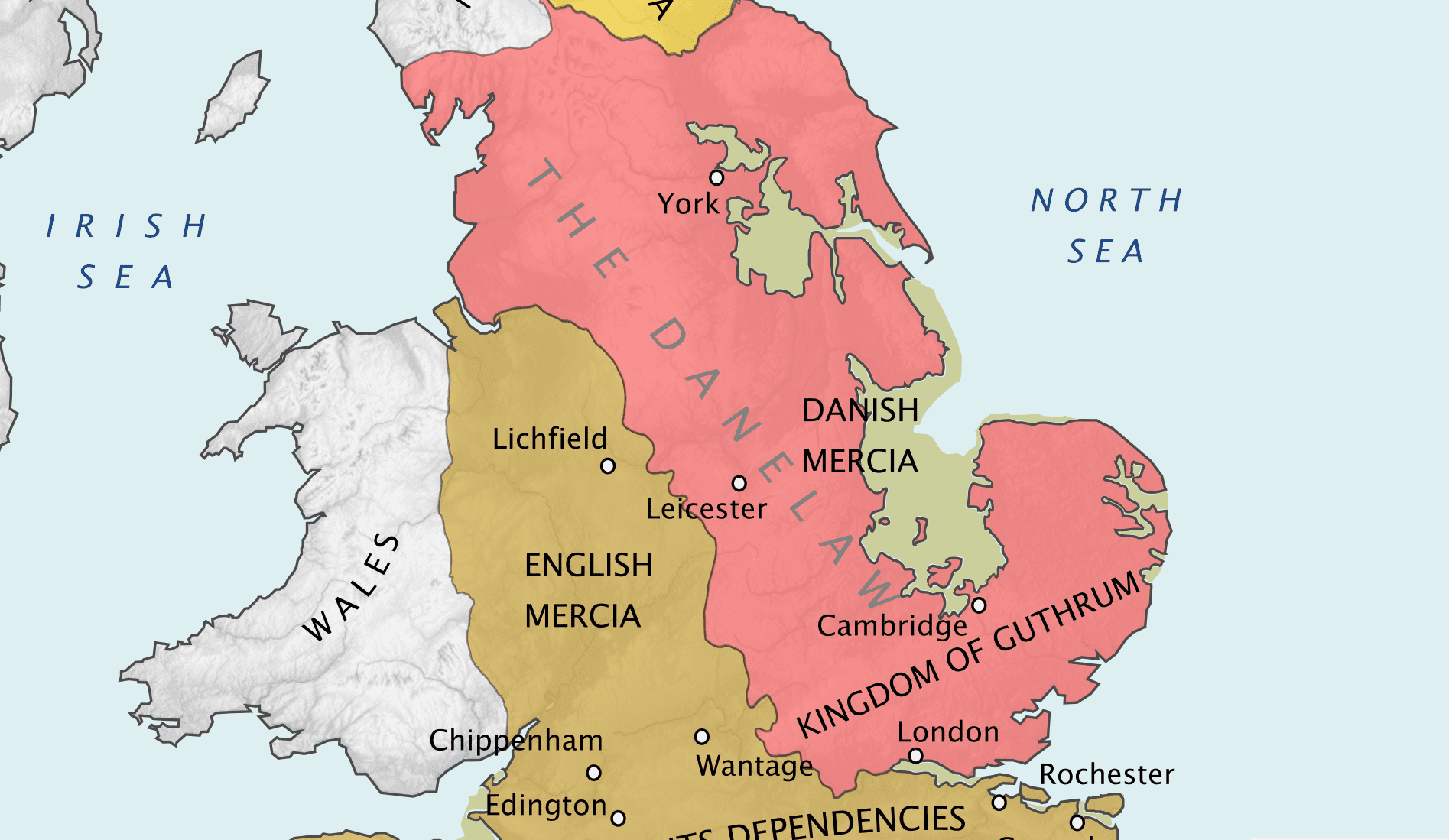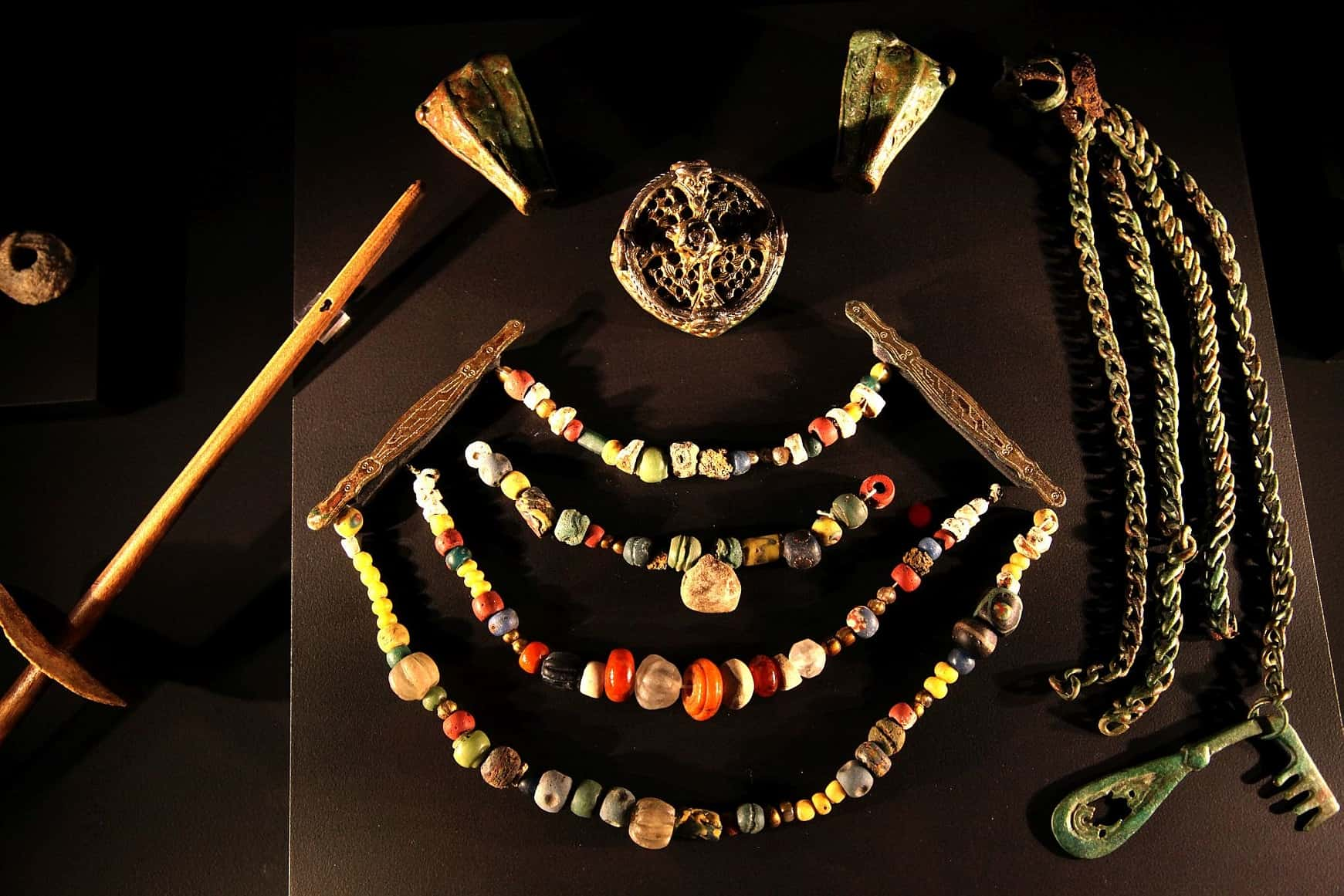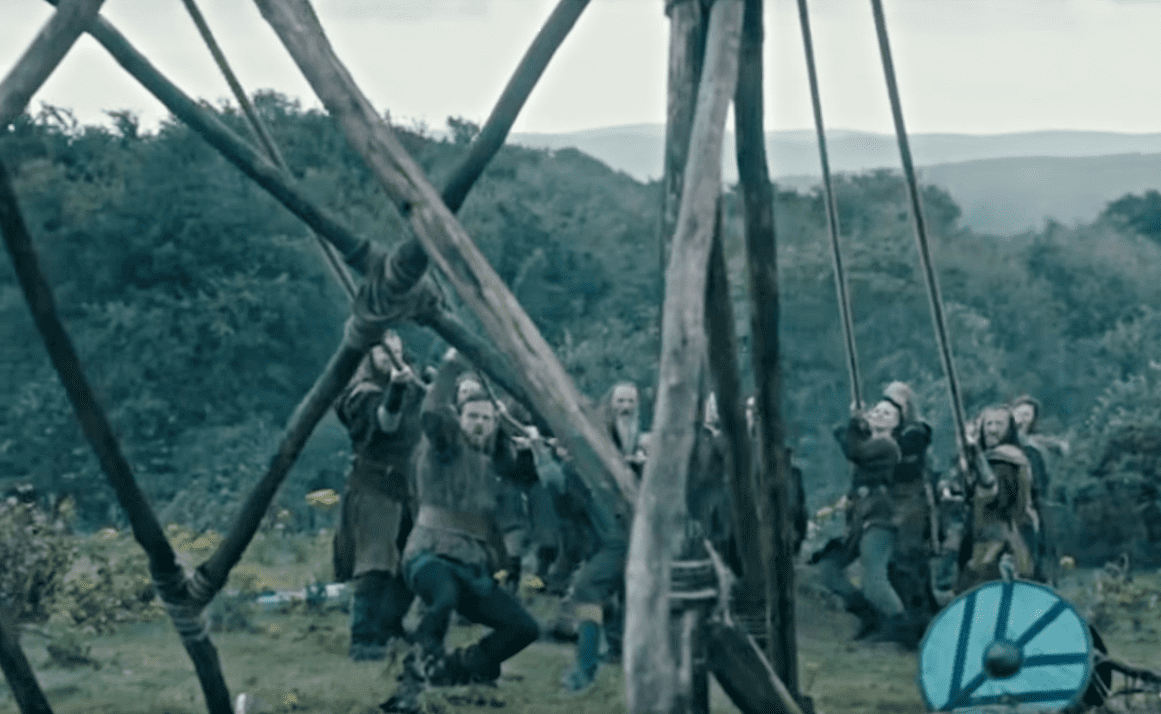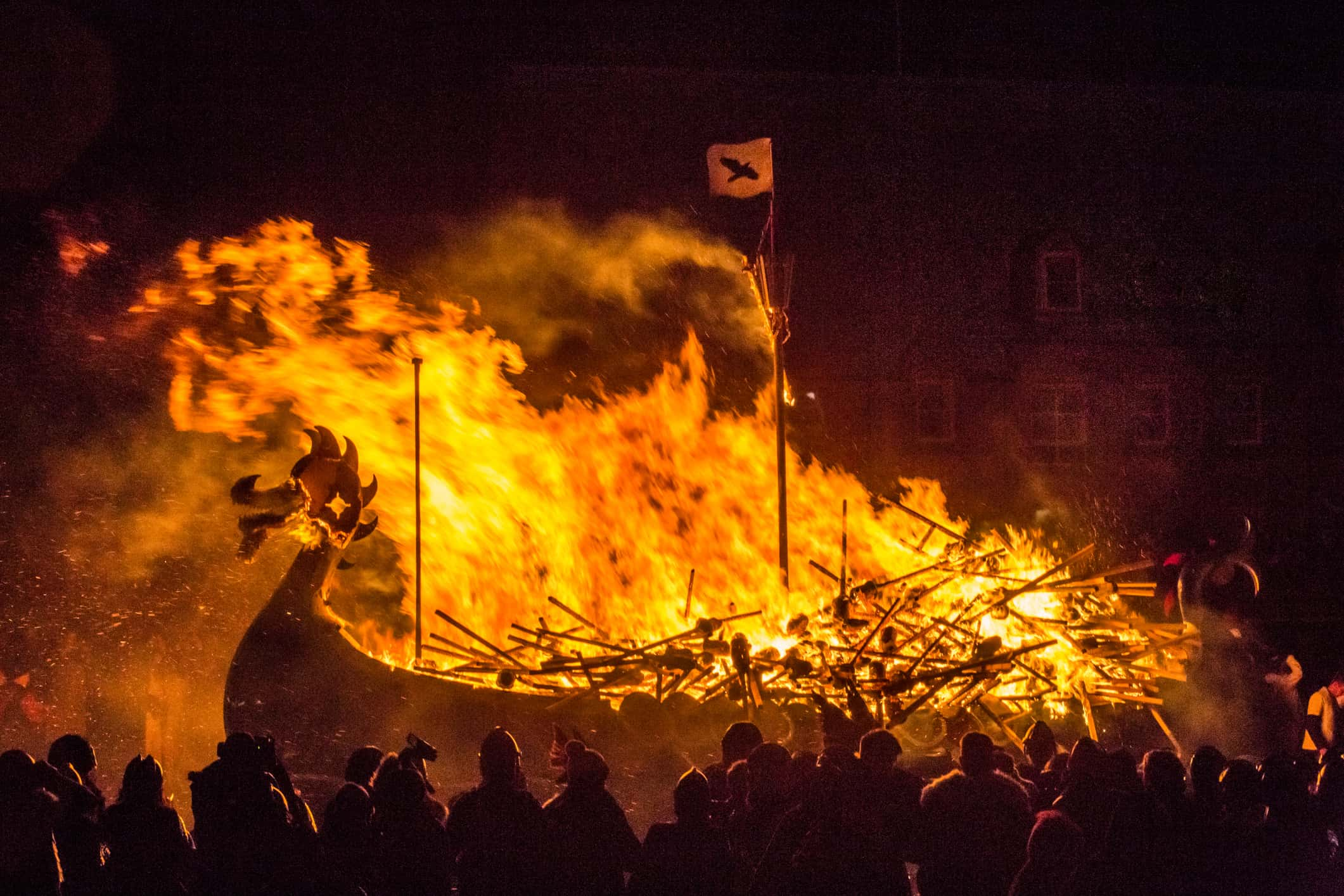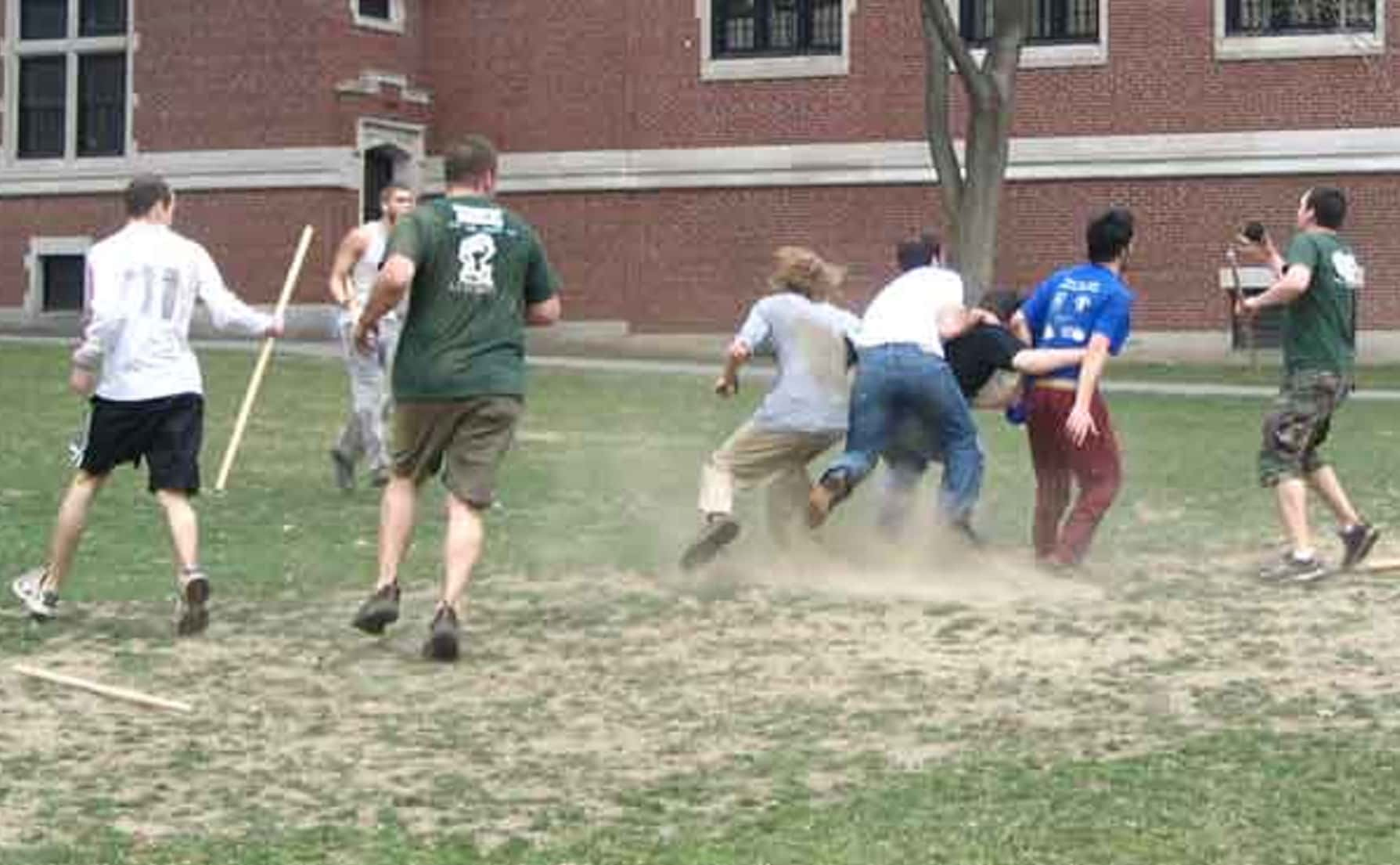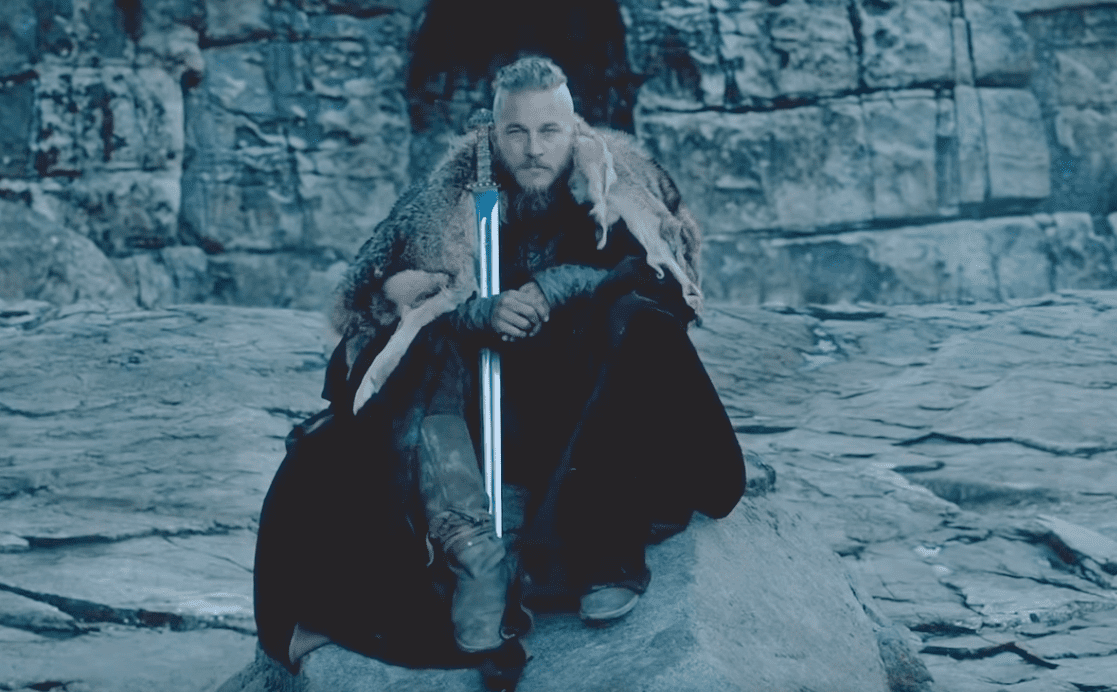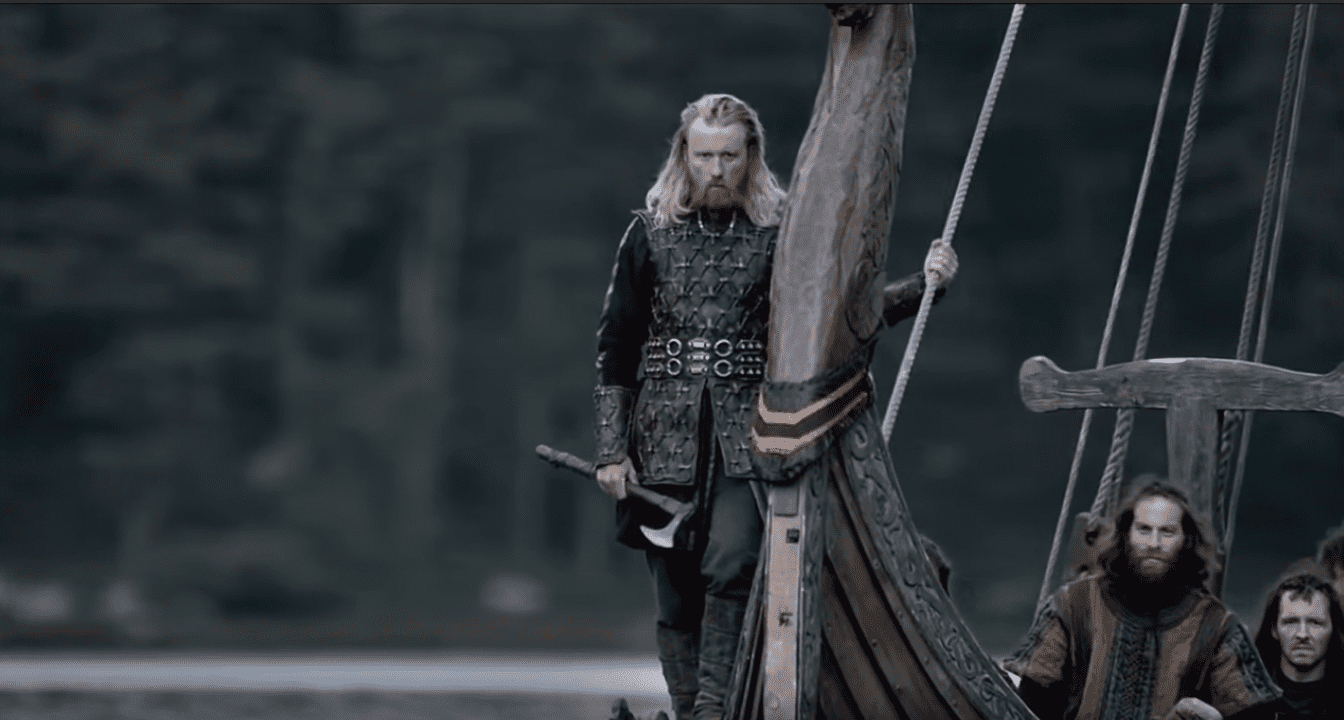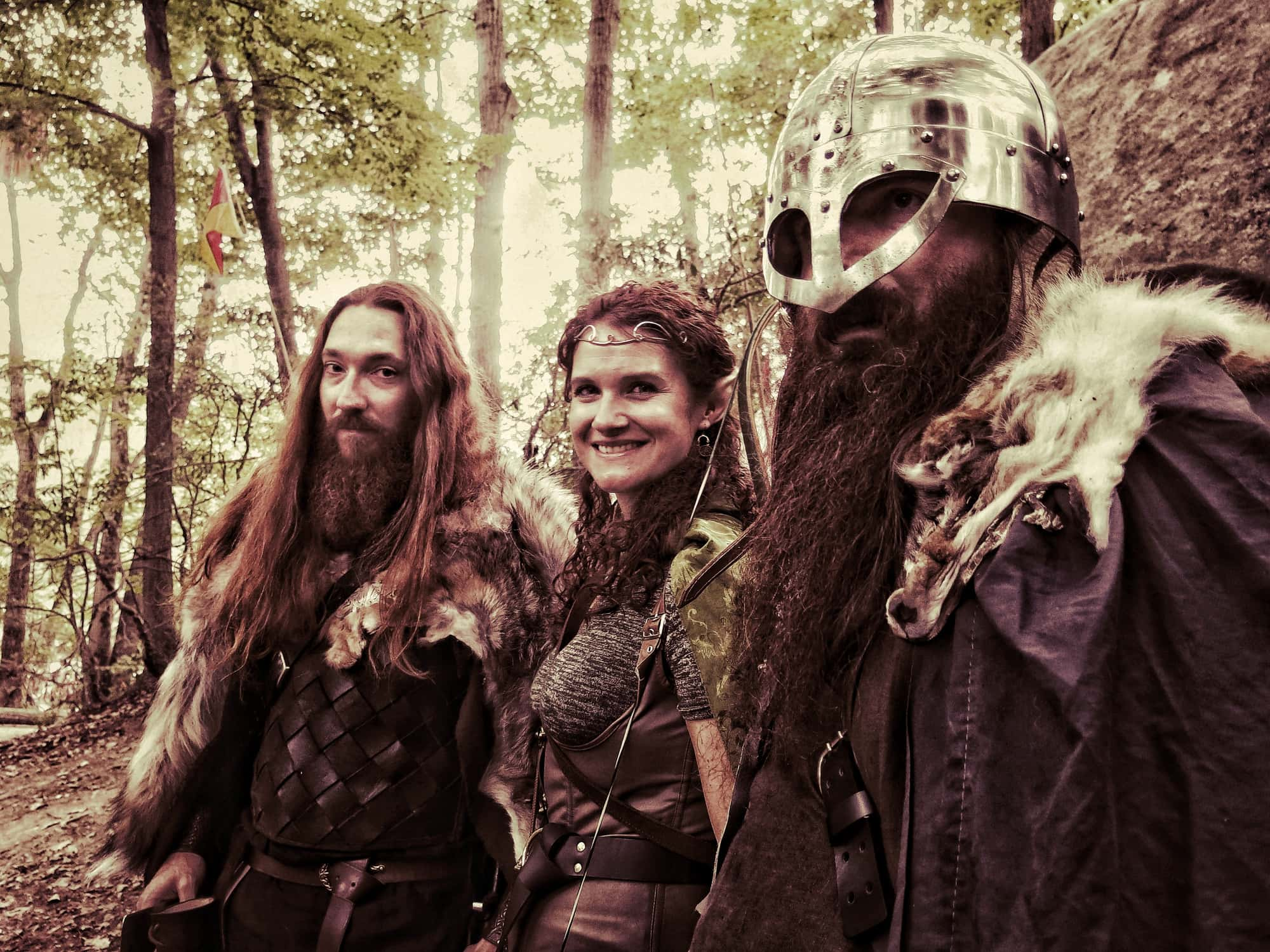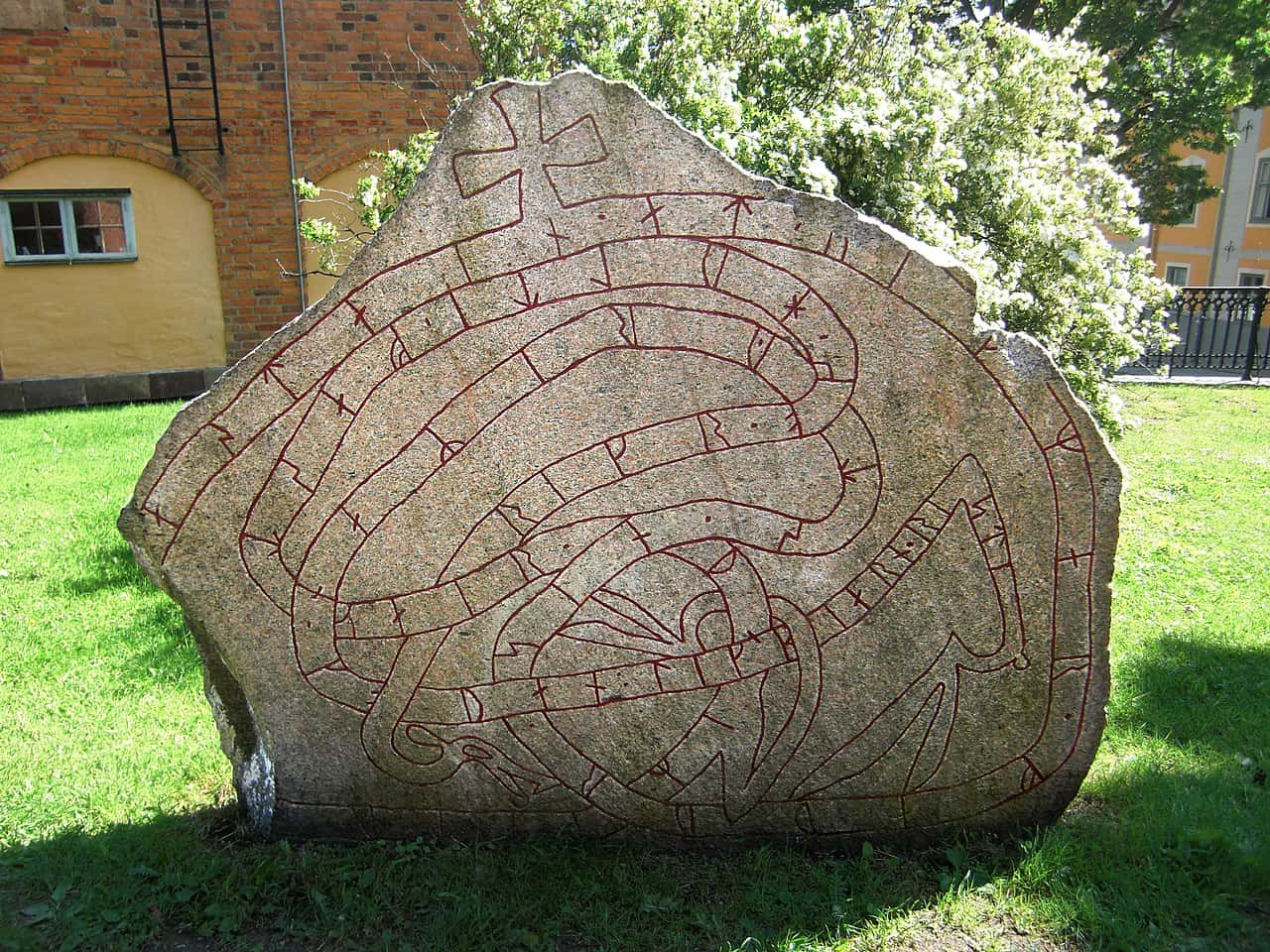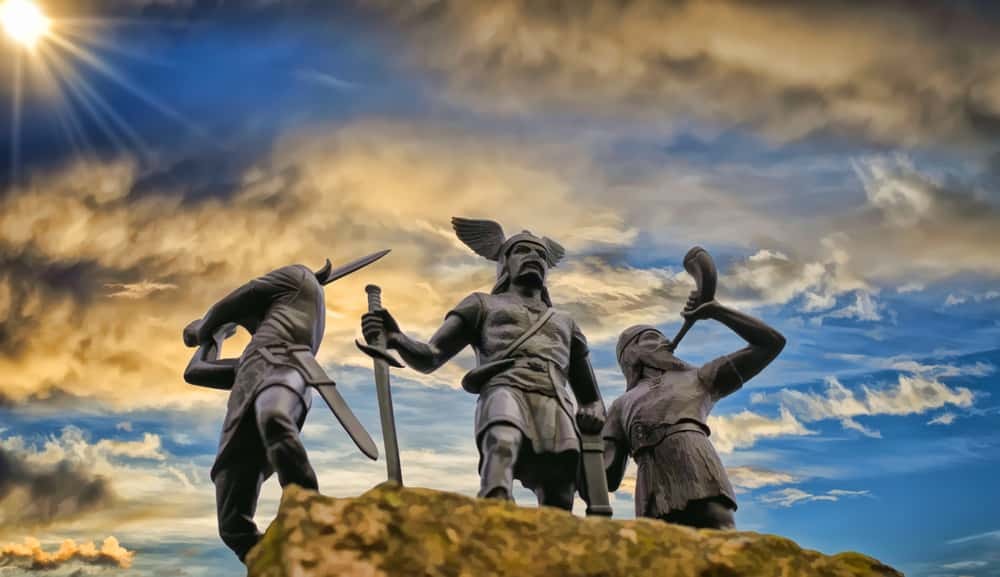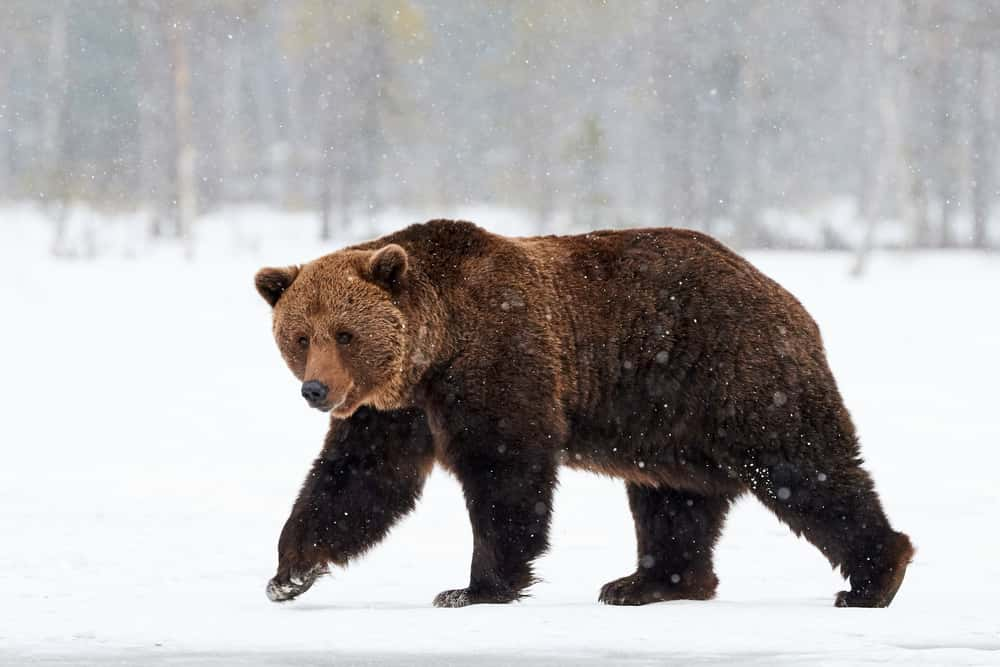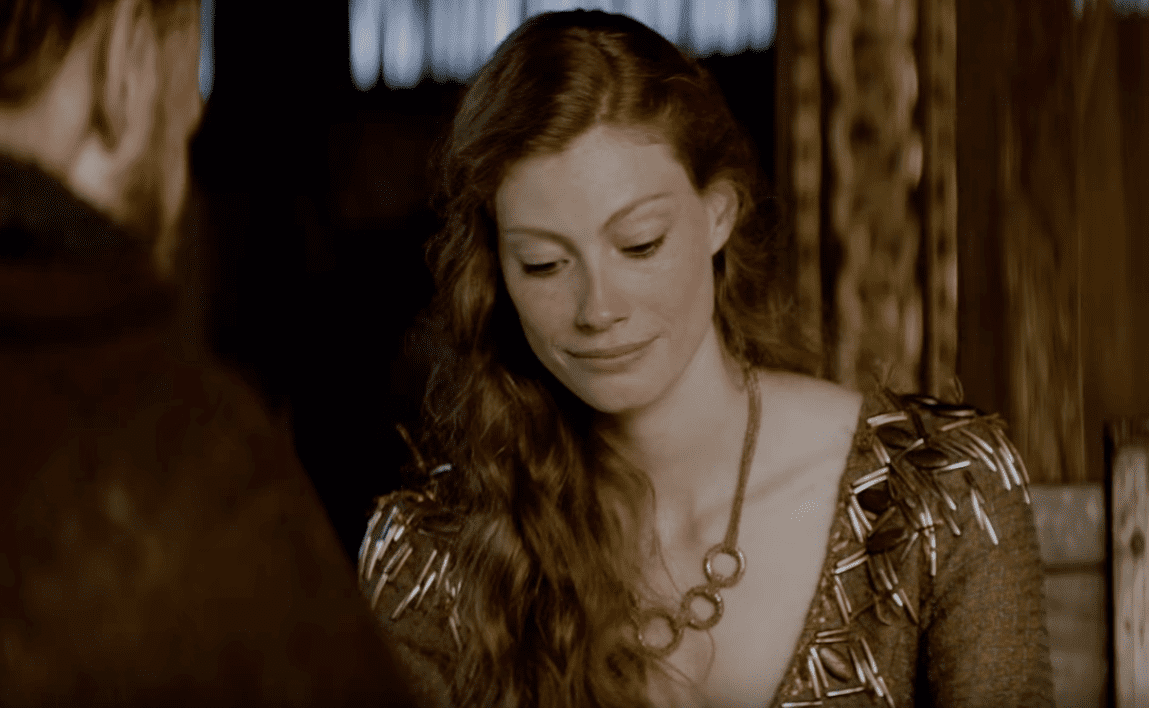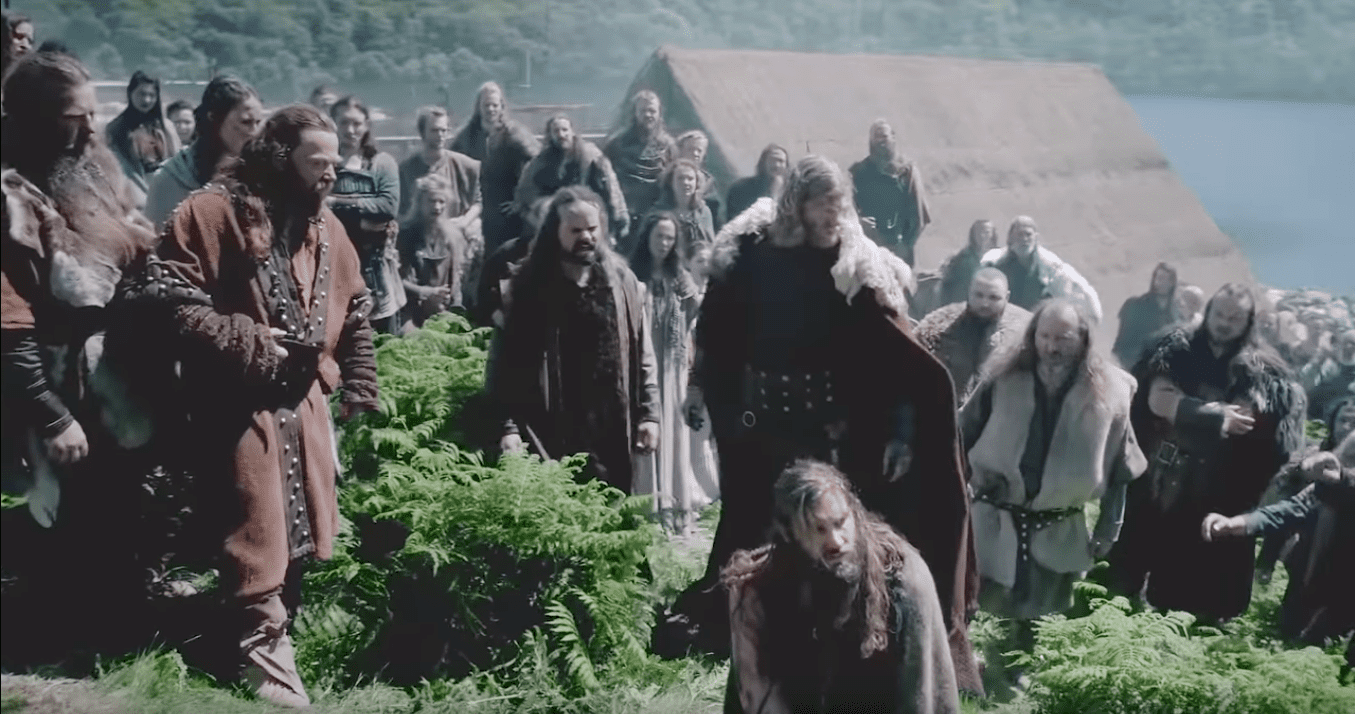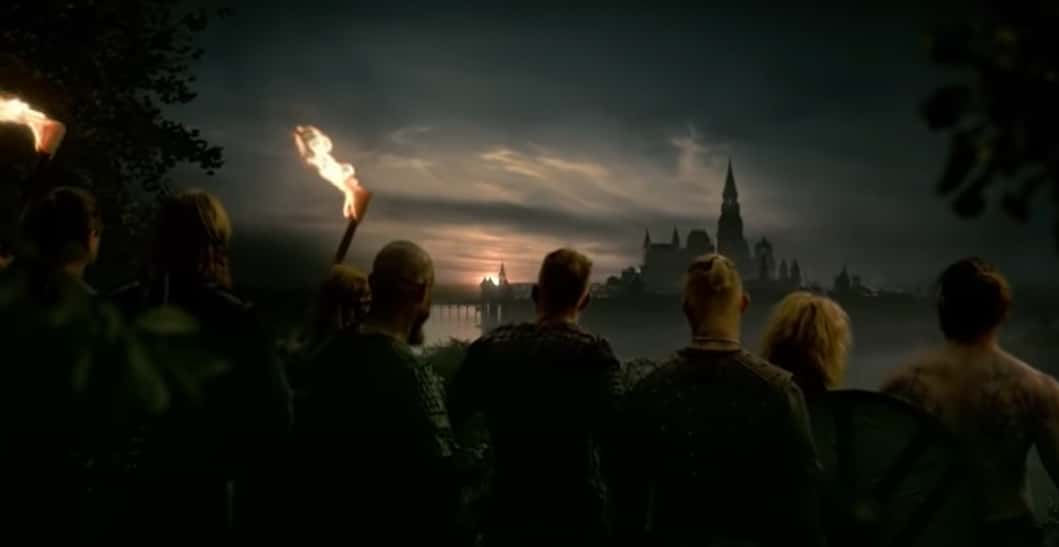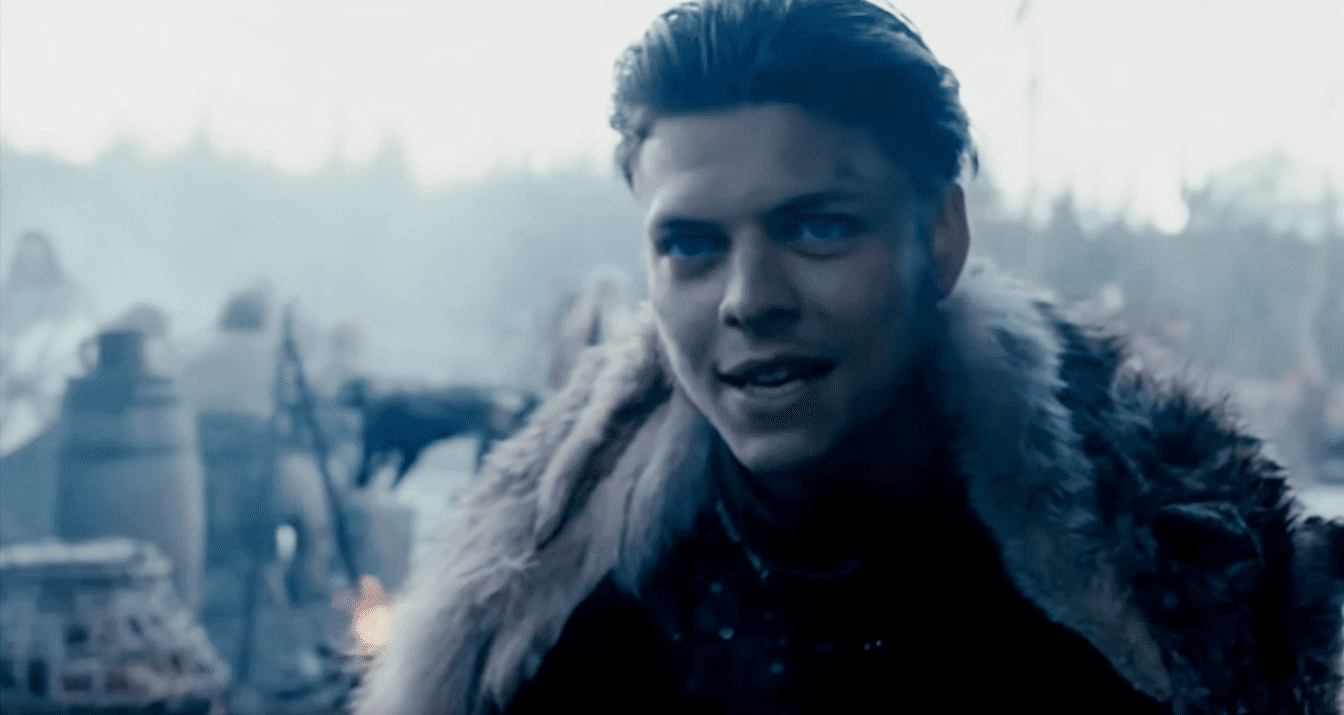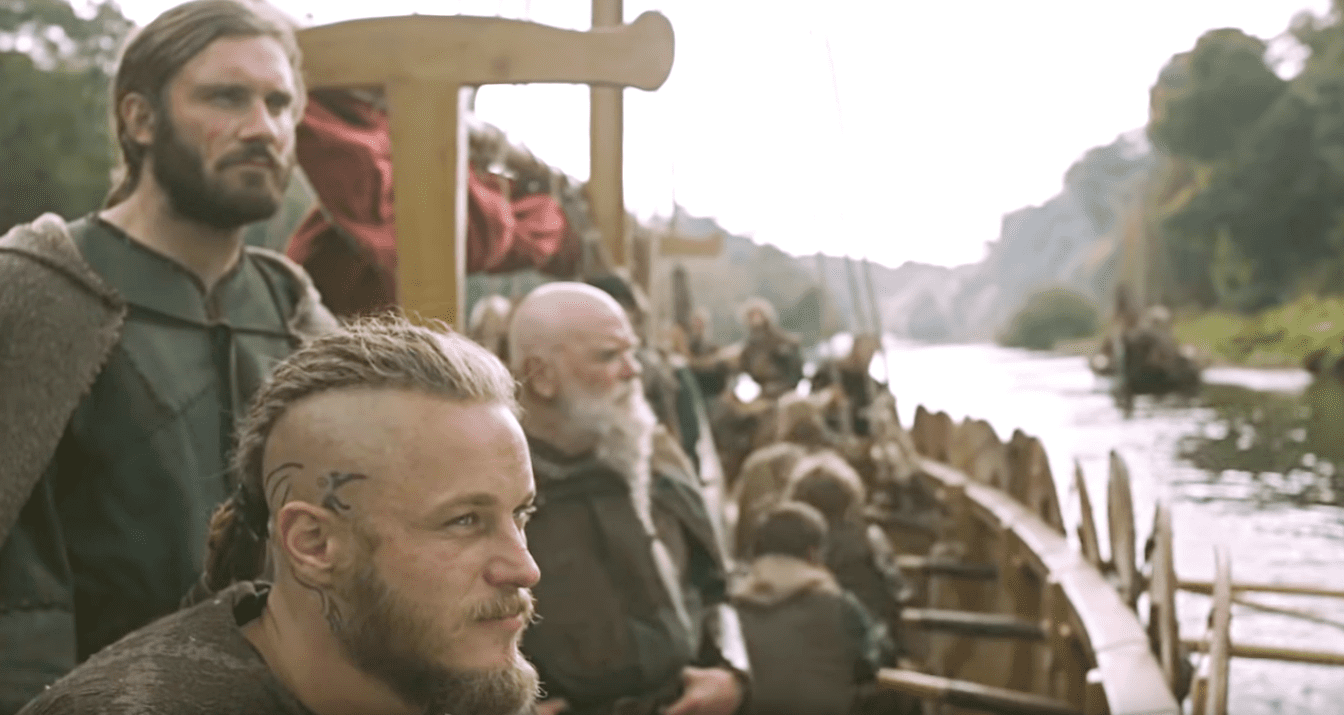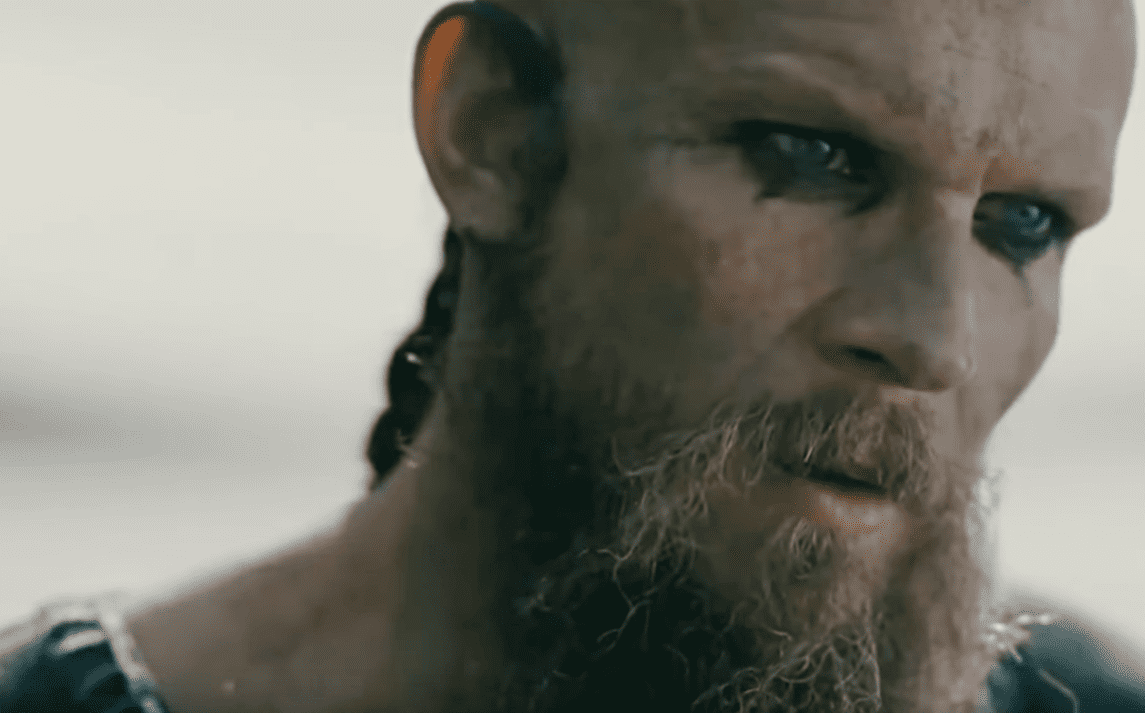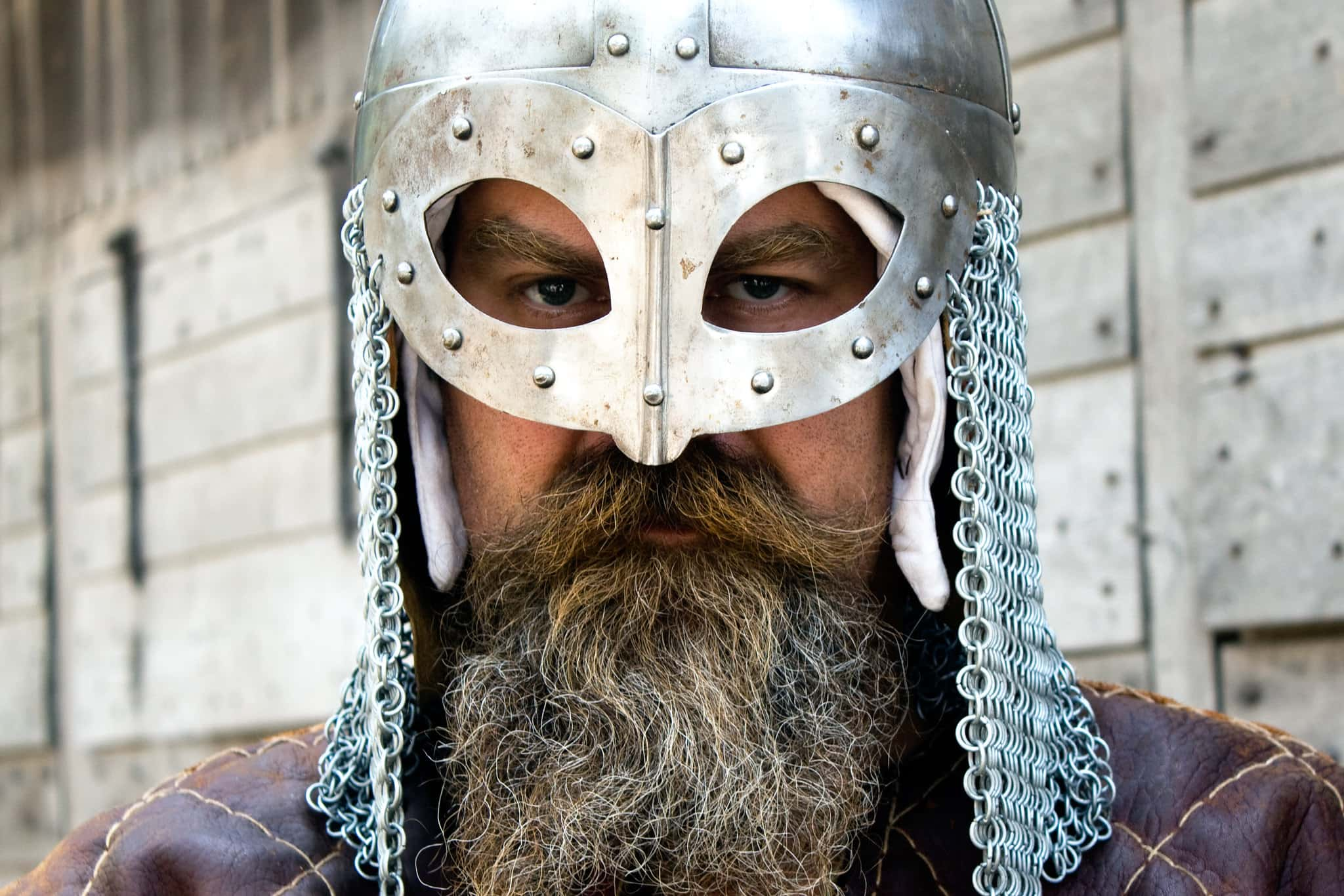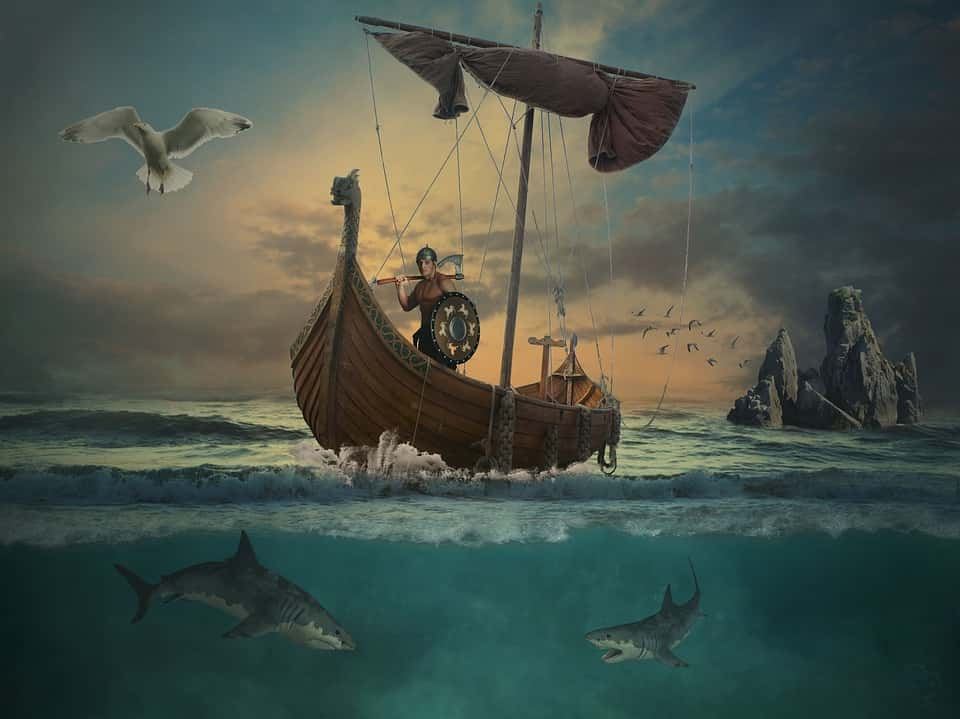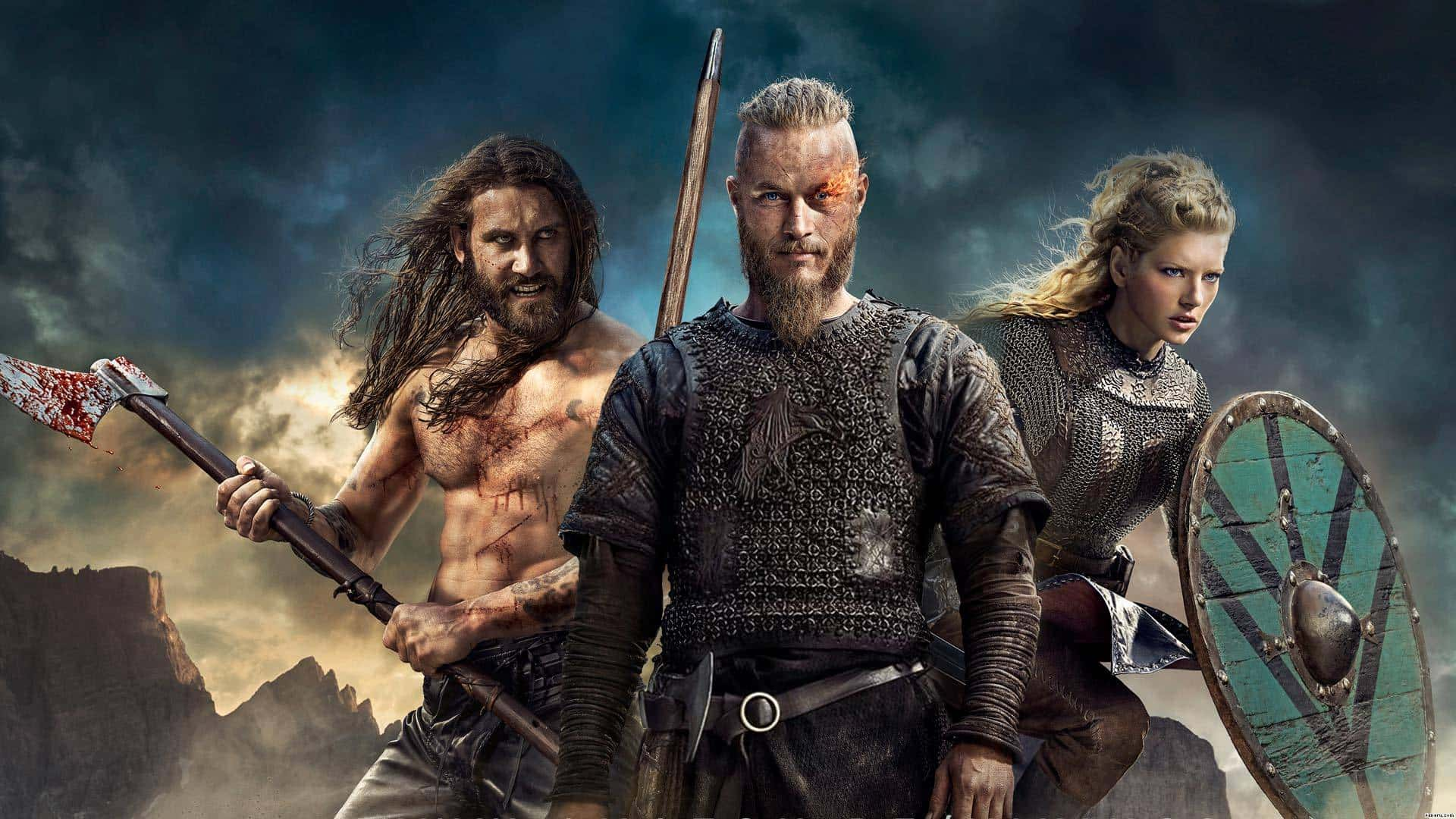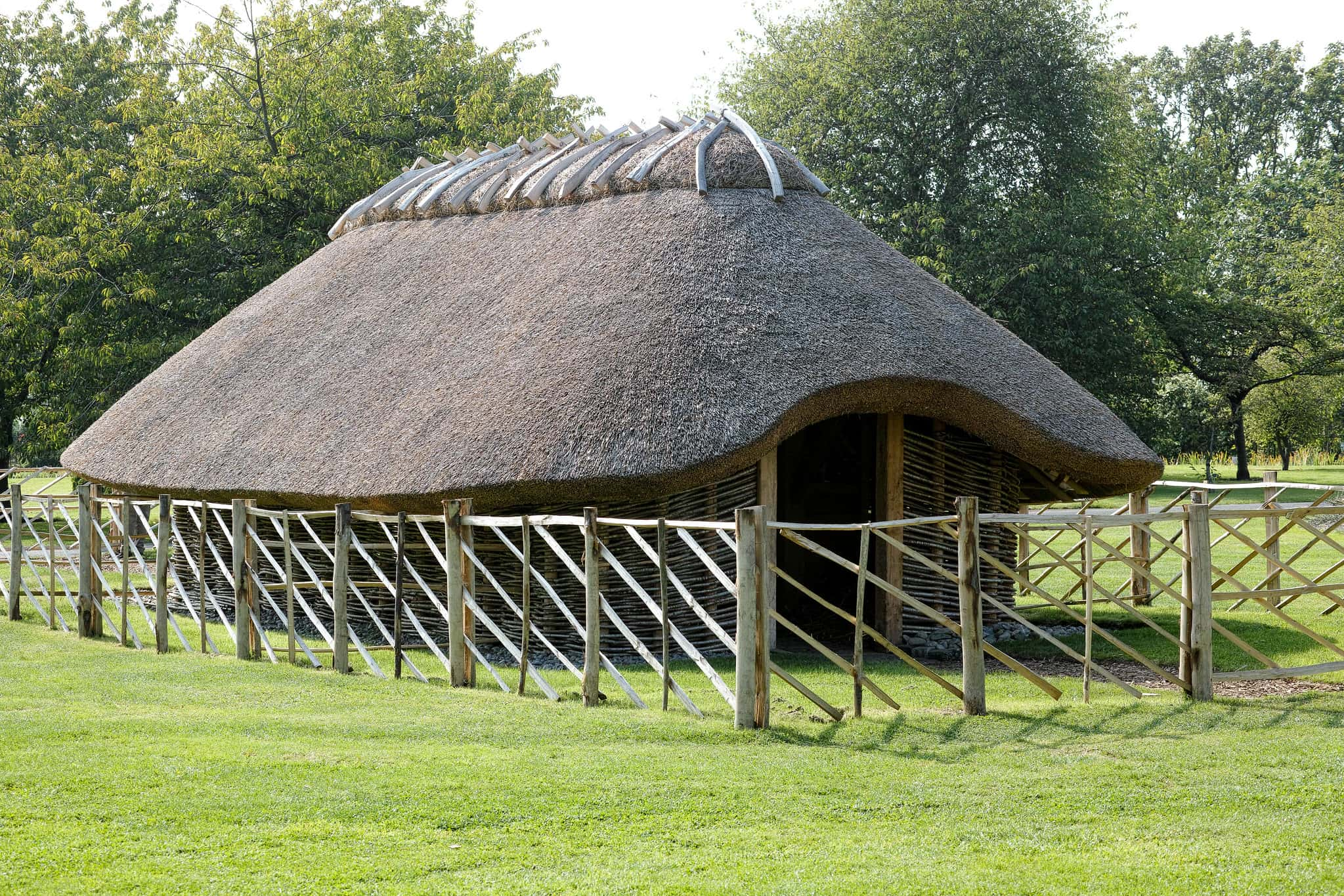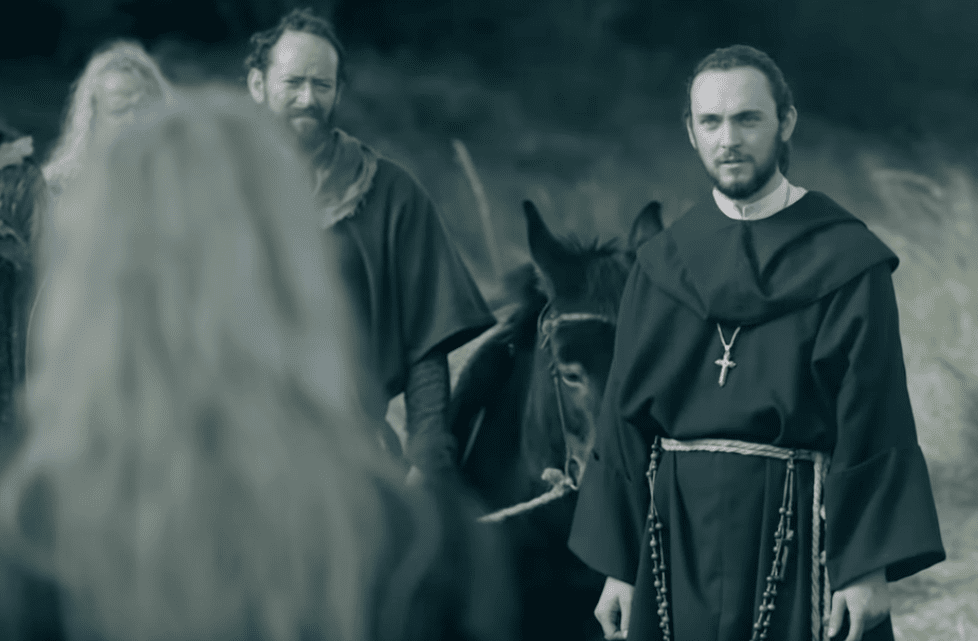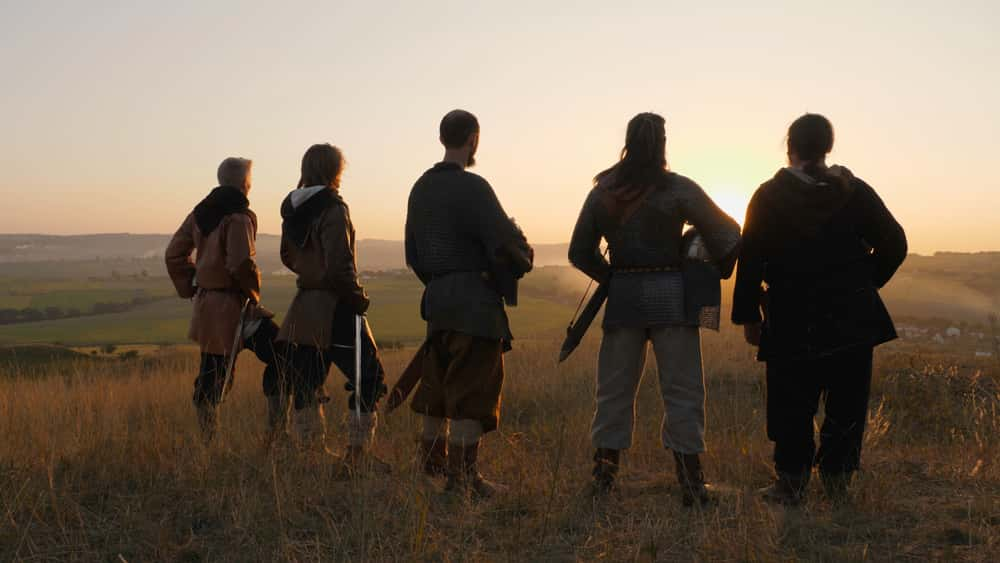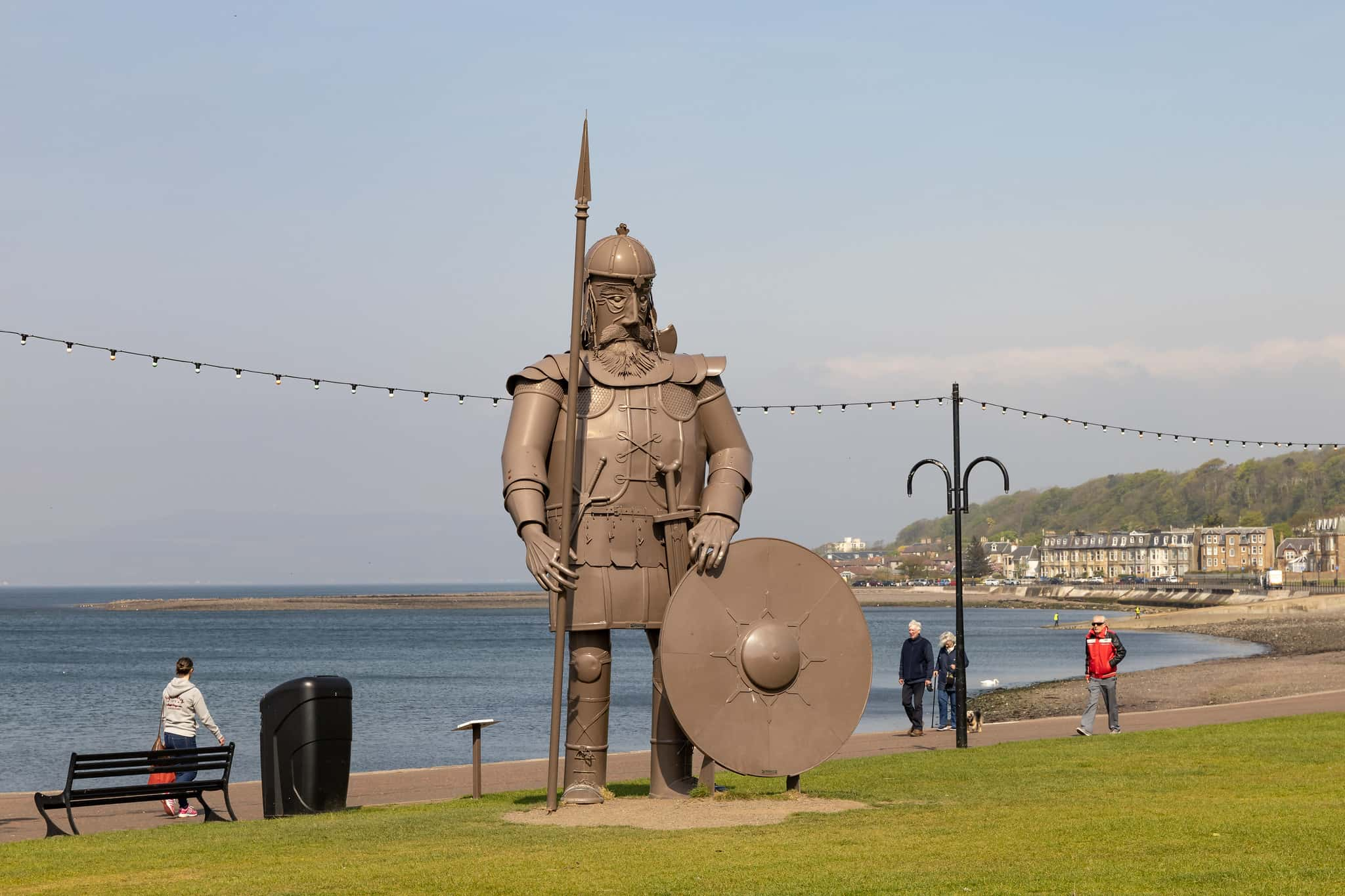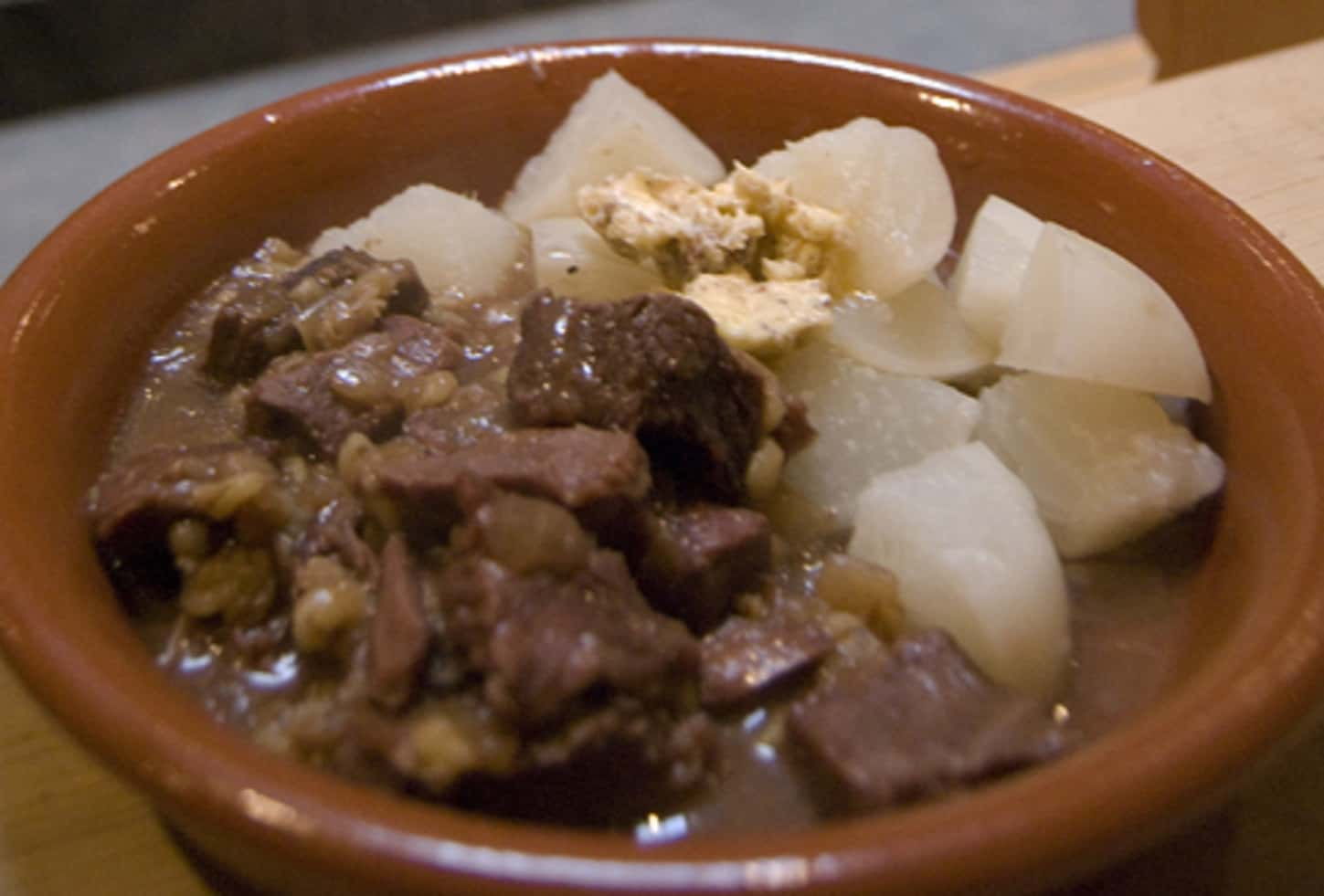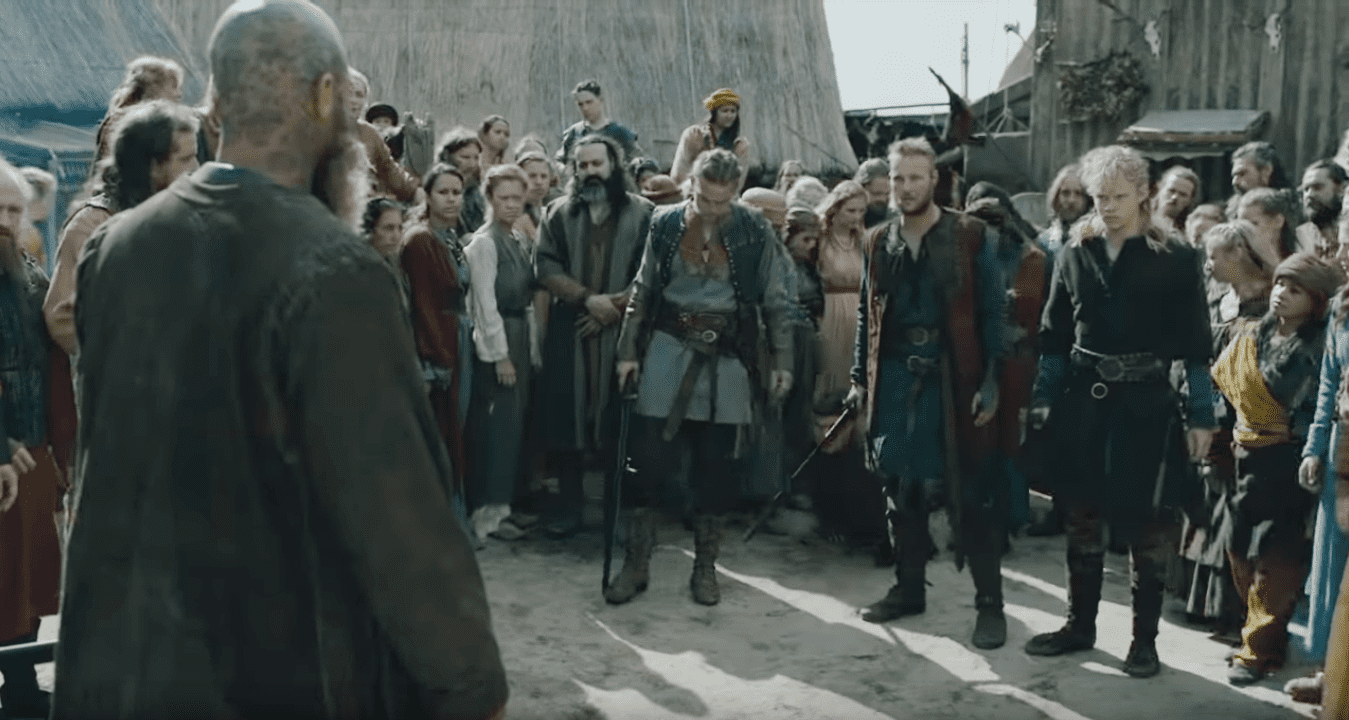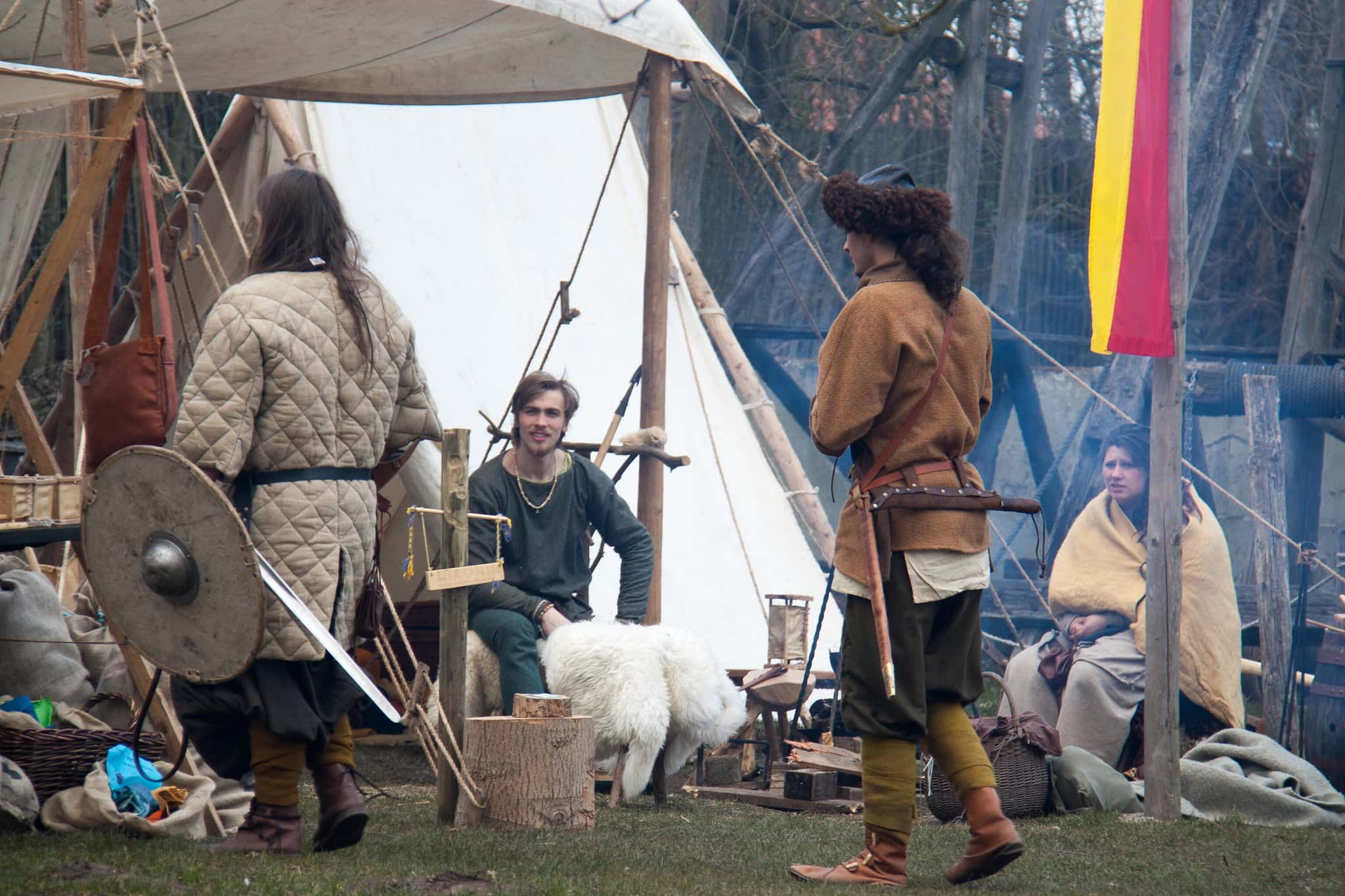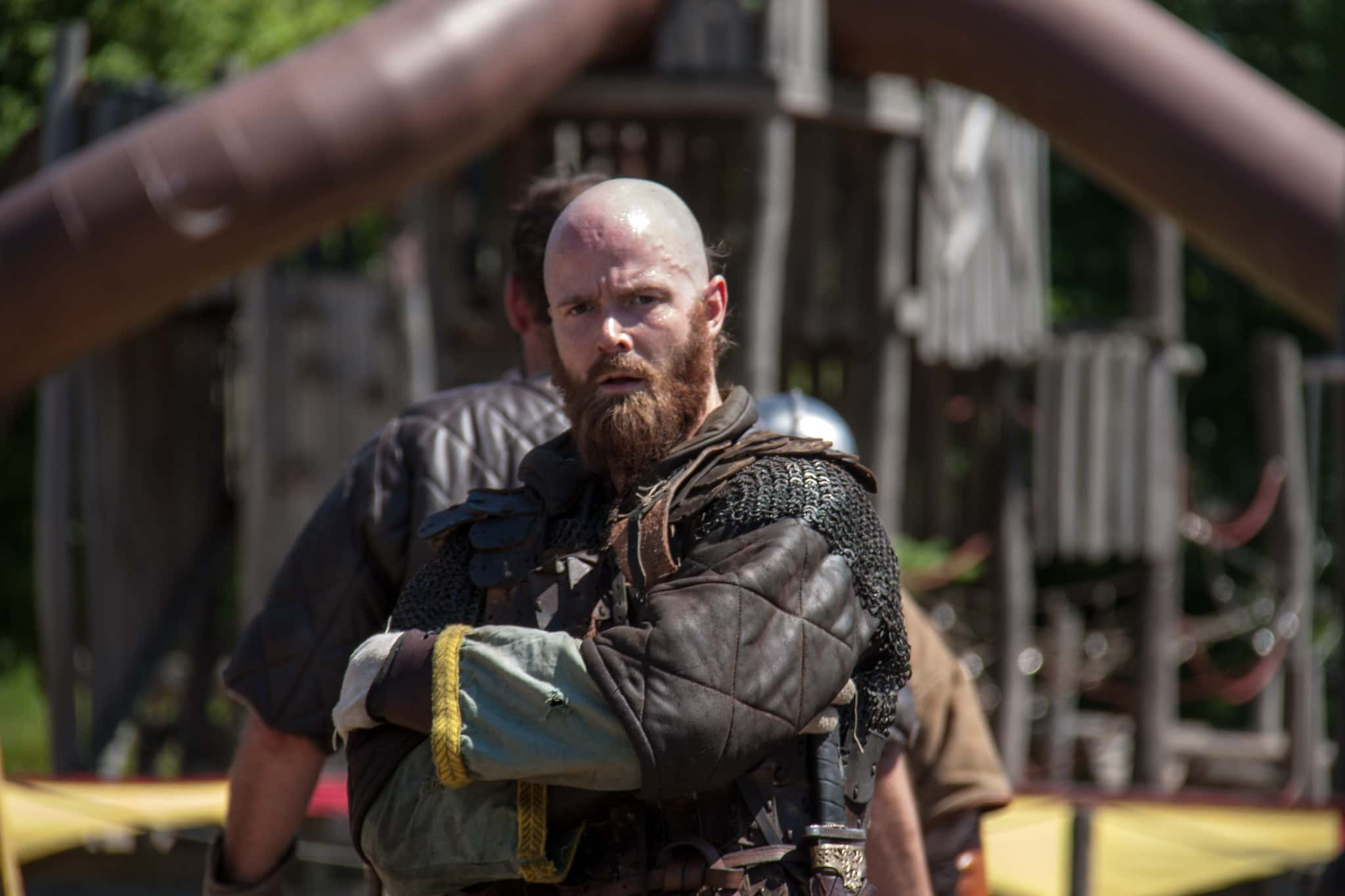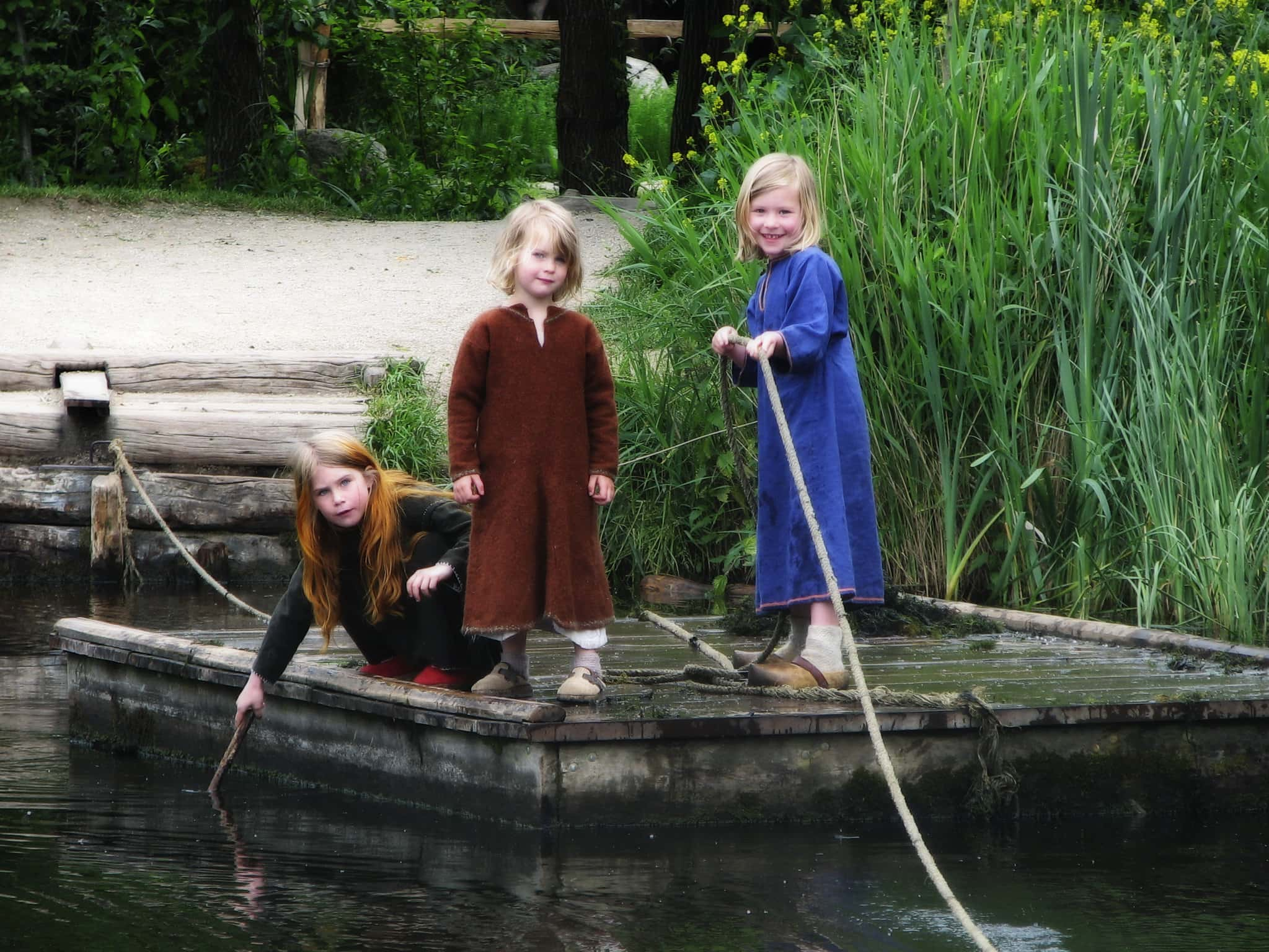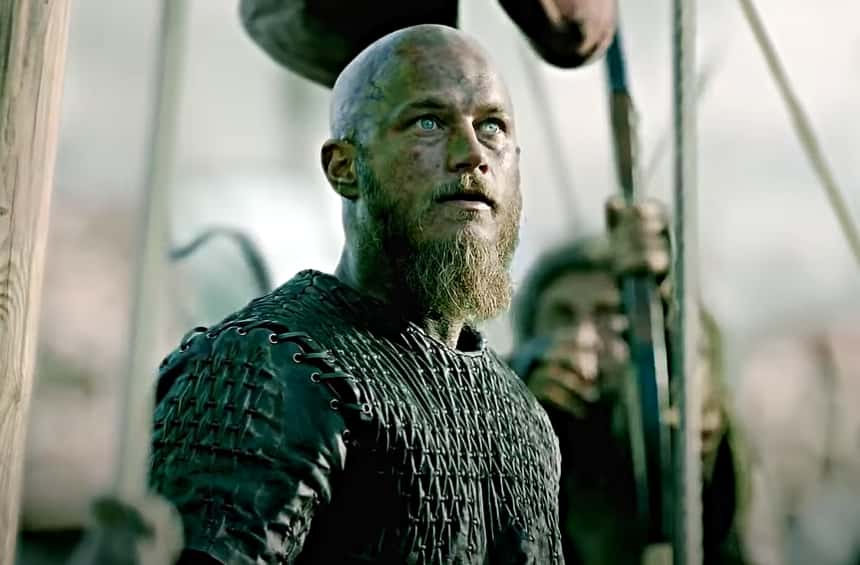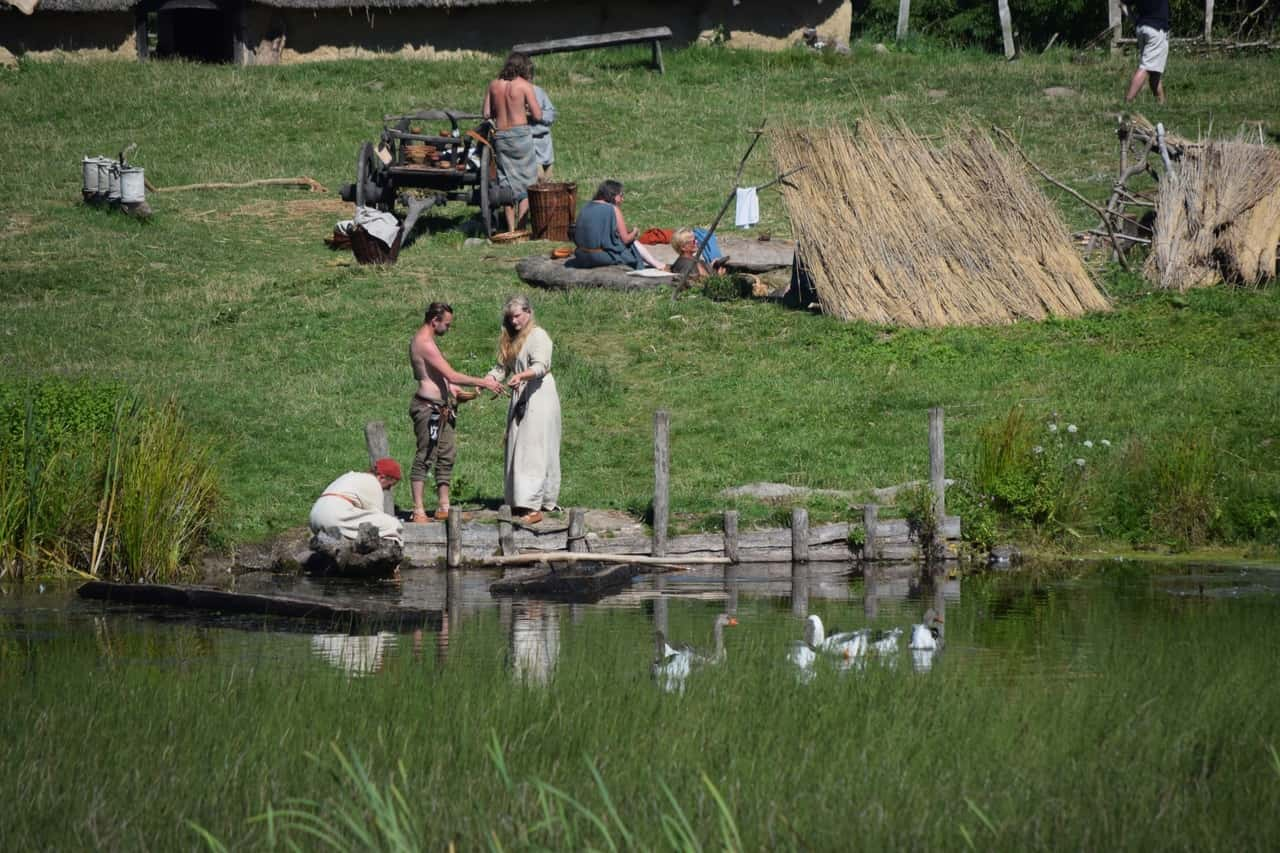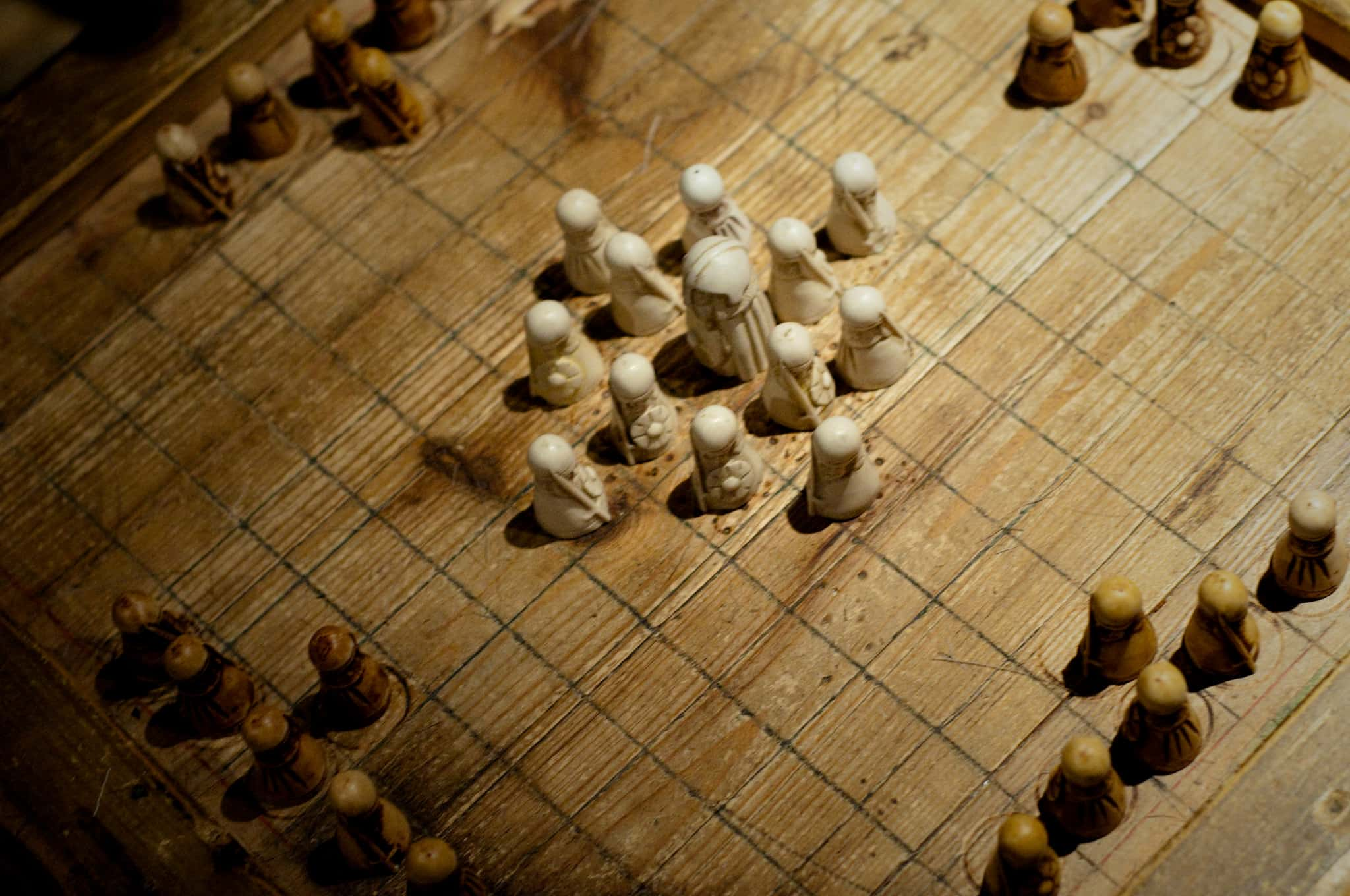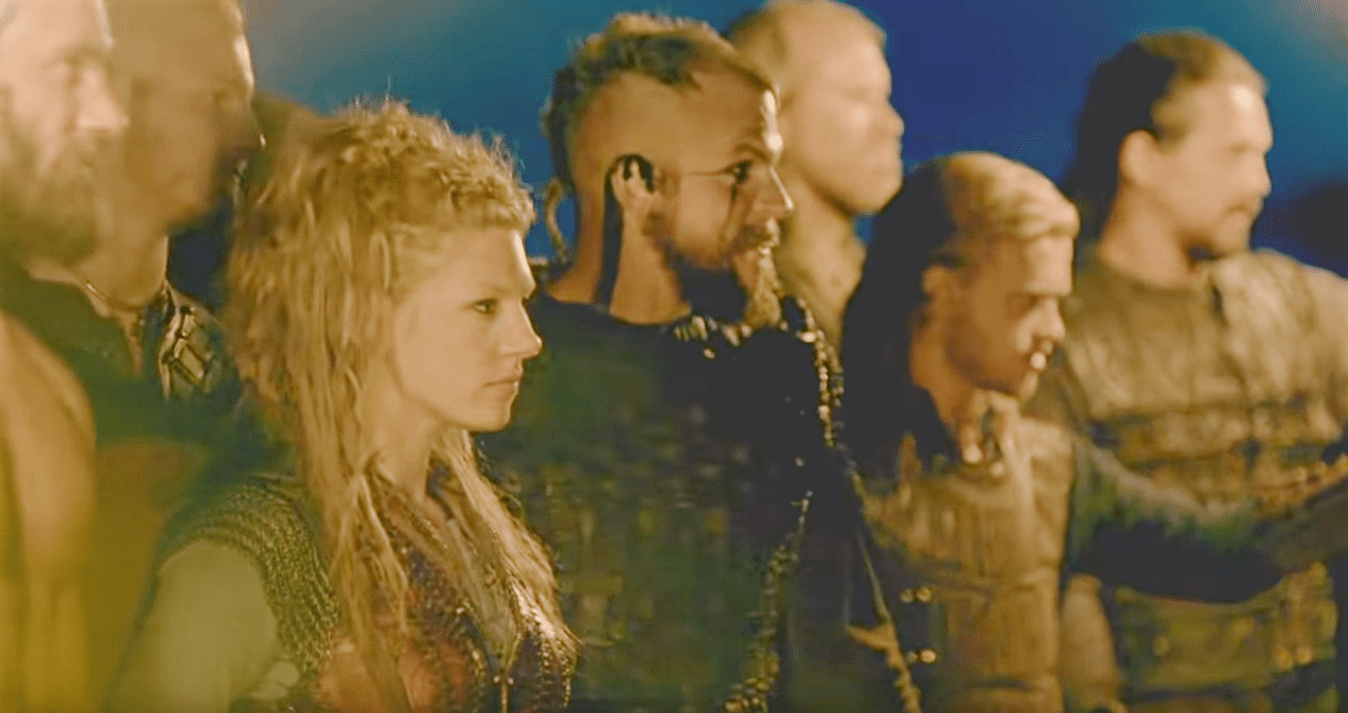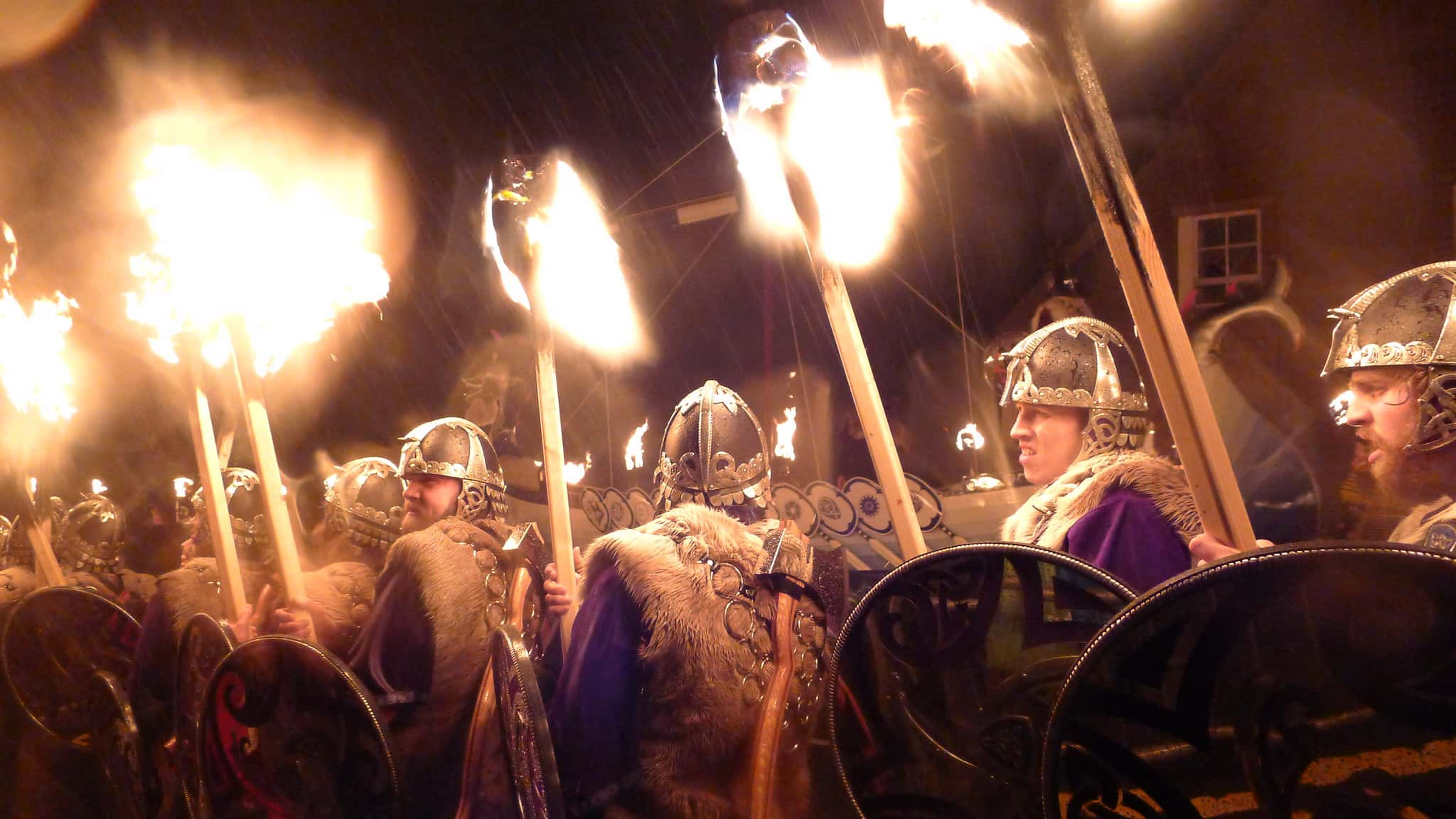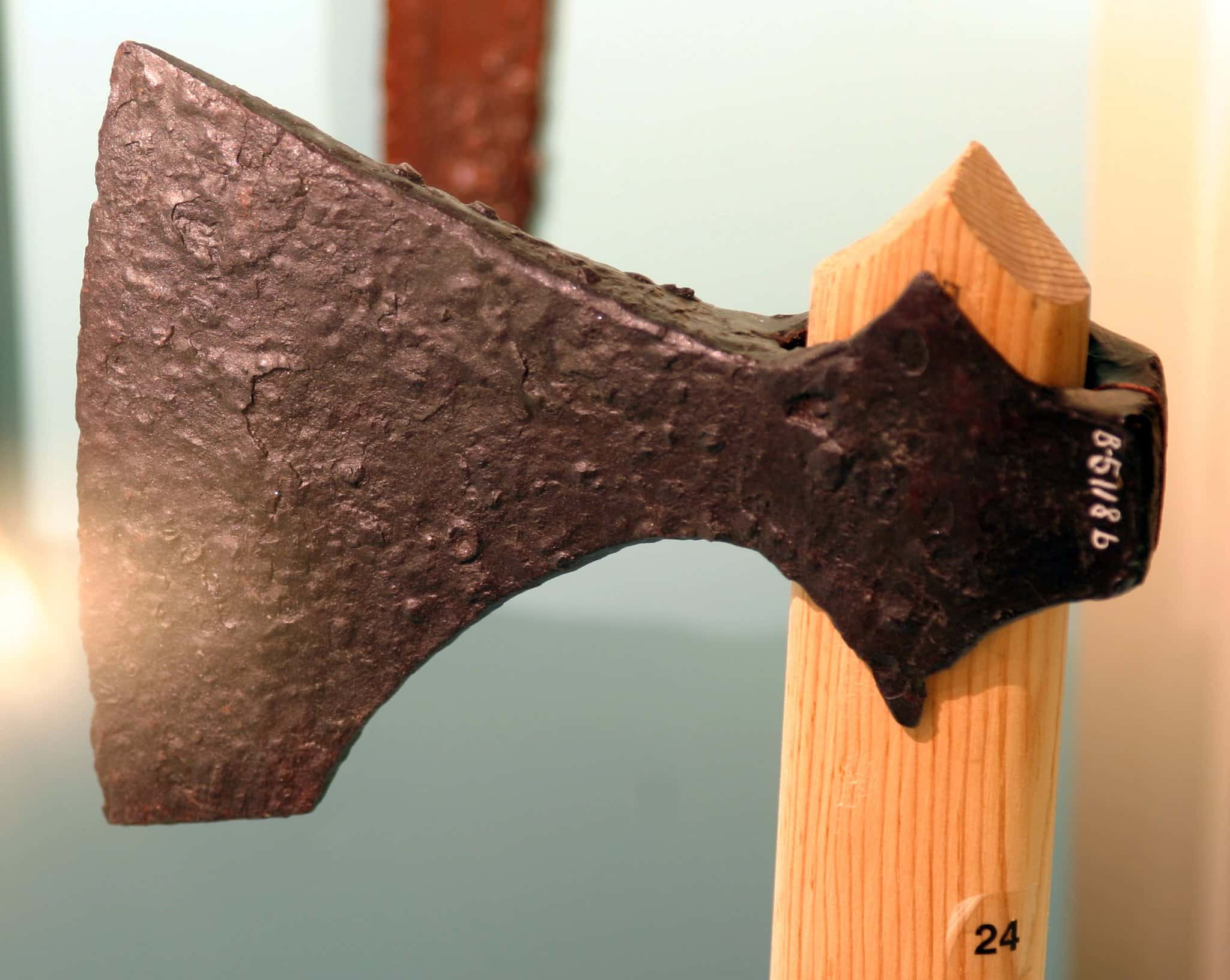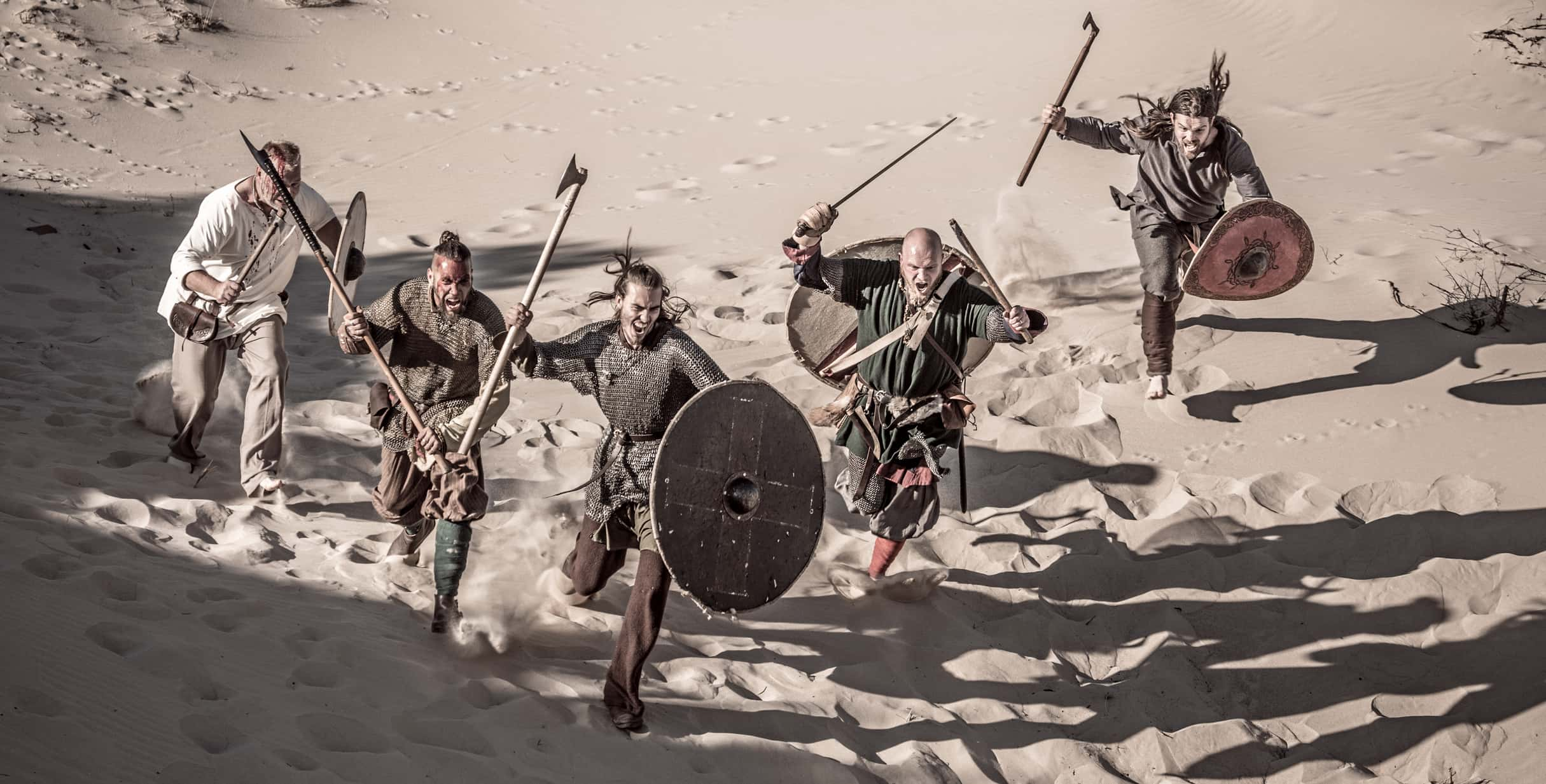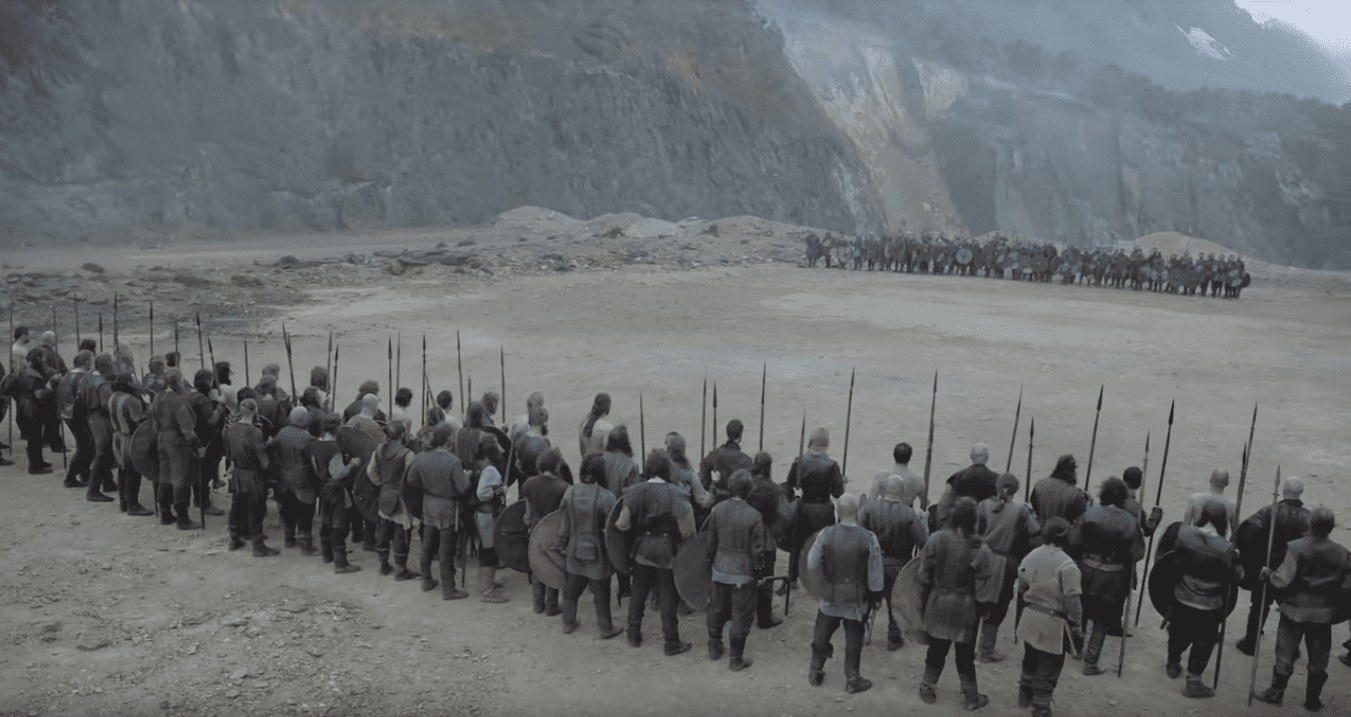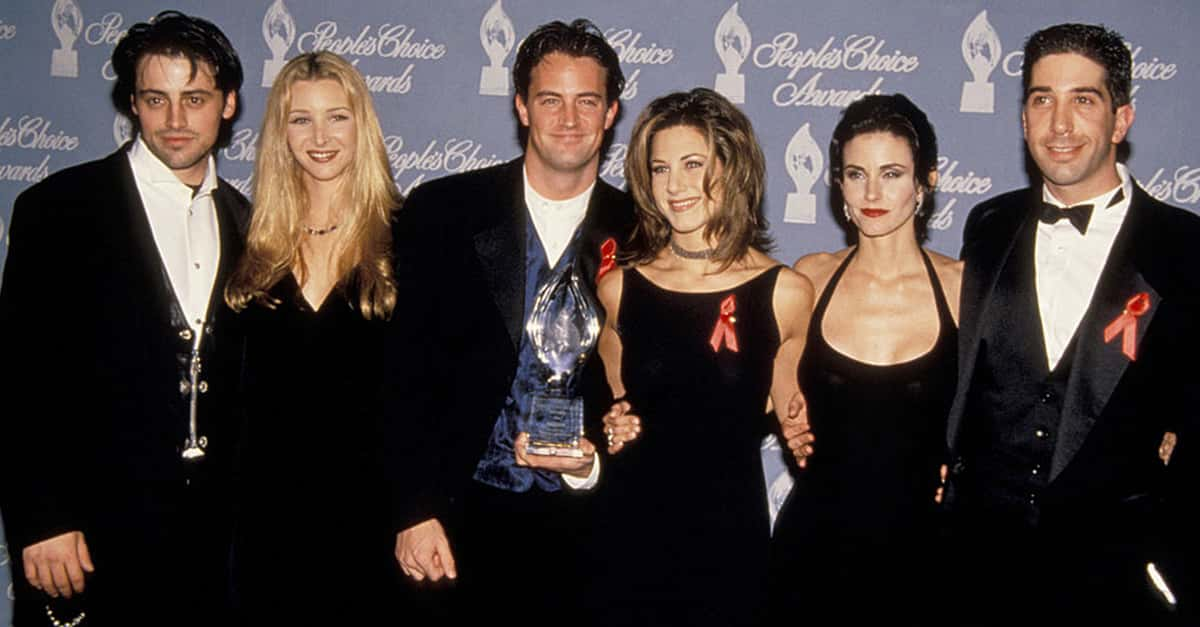The Vikings were raiders from Scandinavia who, during the period now called the Viking Age, terrorized coastal Europe for hundreds of years. Thanks in part to some fanciful representations, Vikings have a very specific image today—one that is sometimes accurate, and sometimes way off. Many stories of Viking brutality are disturbingly true, but their culture was far more nuanced than many people would assume.
Were they dirty or well kept? Did they actually wear those crazy horned helmets? So much of what we know about their culture was either written by the people they were conquering, or simply fabricated by people hundreds of years after the Viking Age had ended, so it can be hard to separate fact from fiction. But, underneath all the misconceptions, the Vikings were nonetheless an extremely fascinating people—and yes, they were still some of the most fearsome warriors in Europe's history. Read on to learn to discover 42 brutal facts about the Vikings, the Scourge of the North.
1. That's No Merchant
The first recorded Viking raid on England was written about in the Anglo-Saxon Chronicle. In 789 AD, a group of Norsemen landed on the Isle of Portland in Dorset. A royal official situated there mistook them for merchants, and he asked them to pay taxes on their goods. Instead, the Vikings took the man's life. This was before the English knew what to expect from the Vikings, but they'd soon learn that all too well.
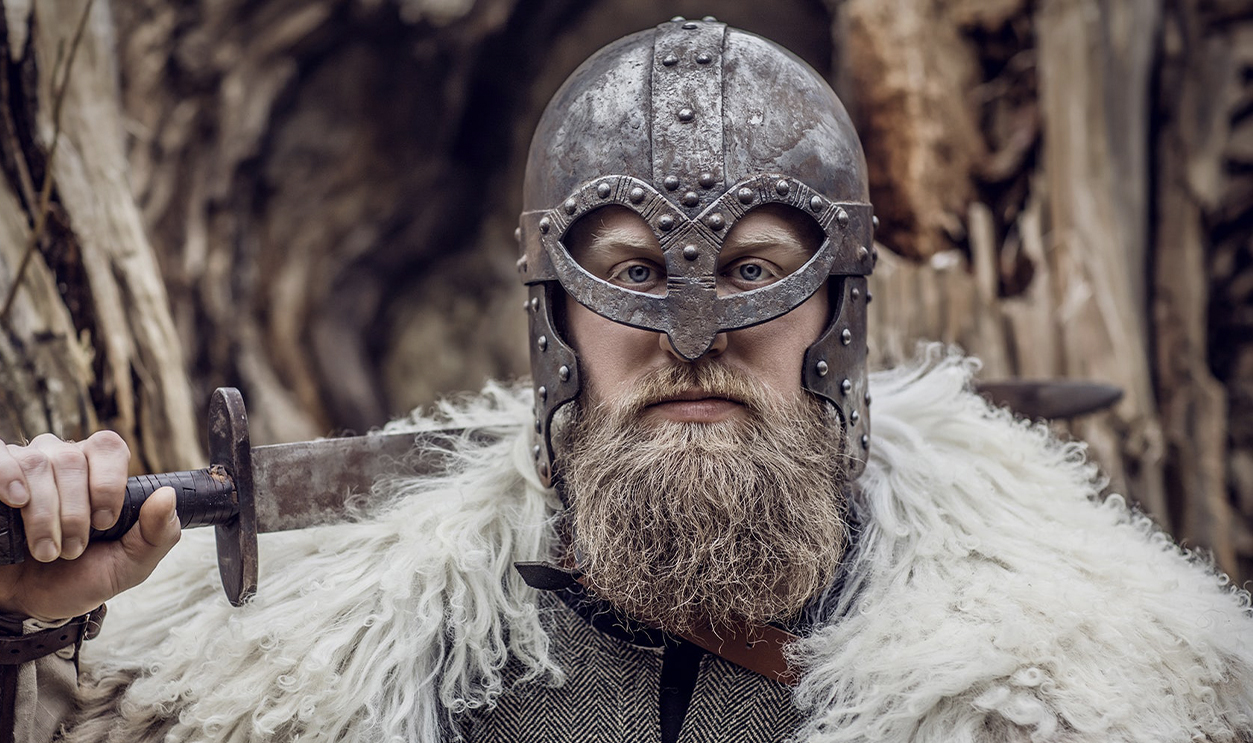
2. The Law of the Danes
Danelaw refers to the regions of England that were forced to follow the laws that the Vikings implemented after their invasion. Originally, the term referred only to Viking law itself, but eventually "the Danelaw" became a geographic term that referred to those parts of England that the Vikings controlled, specifically much of central England and the eastern coast, including modern-day Leicester, York, Cambridge, and Buckingham.
3. Treasure Hunters
One side effect of the Viking Age was that various treasure hoards were buried in England during the time period. Some of these hoards were hidden by the English in an attempt to hide their riches from the invaders, while others were created by the Vikings themselves to protect the treasure that they looted from the country. One of these hoards was discovered in 1862, and it contained a vast store of silver in the form of coins, ingots, and hacksilver.
4. Be Prepared
Pacifism wasn't exactly an option in the Norse world: Viking custom required all free men to own weapons, and they were allowed to be fully armed at all times. The quality of one's gear would reflect their social standing—a wealthy man would be fully decked out with a helmet, shield, chainmail and a sword. While I'm sure they looked nice, these swords weren't actually used in battle very frequently, with spears being much more common when it came to actual fighting.
5. I'm Sailing Away
One of the most enduring images in our imaginations of Vikings is of their funerals where a body would be put on a boat that would be set on fire and pushed out to sea. Unlike many myths about Vikings, this one is at least partially true, but it was reserved for the extremely wealthy. In some cases, the boats were pushed out to sea and burned, and in others, the Viking was placed in the ship and the whole thing would be buried along with personal possessions and even sacrificed thralls. So at least something we knew about the Vikings was actually right.
6. Sports
Among the many sports that the Vikings played, one game called Knattleik was apparently played with a ball and sticks and has been speculated to have been similar to hockey.
7. Cnutjob
Cnut the Great was one of the most powerful Viking kings. Originally from Denmark, he eventually ruled over Norway and England as well, creating what is often referred to as the North Sea Empire. He was known for his brutal methods, and while he dominated Scandinavia and the British Isles for a time, his legacy was almost completely erased within a few decades of his passing, in large part because of the Norman conquest of England in 1066.
8. Be A Good Sport
To no one's surprise, the Vikings were big into a lot of different sports, but their activities looked a little different from today's athletics. Some of the preferred Viking pastimes? Wrestling, fist fighting, stone lifting, knife throwing, horse fighting, and mountain climbing. What else would you expect?
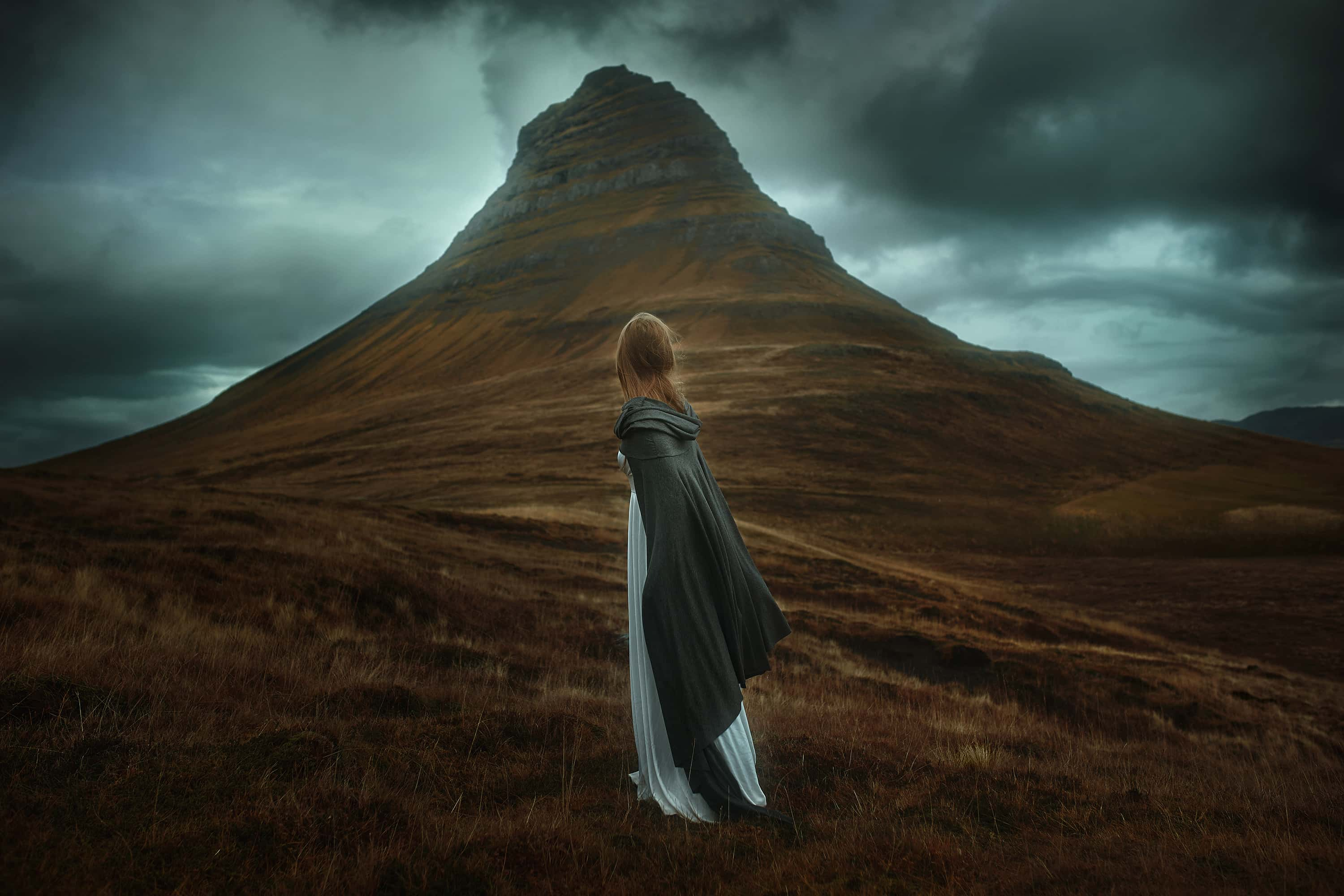 Getty Images
Getty Images
9. It's Called Fashion, Look It Up
We think of the Vikings as brutal, dirty men who spent all their time raiding and pillaging, but there was a lot more to Viking culture than that. In fact, Viking nobles were quite the dandies: They would show off their wealth with silk clothes and fancy jewelry, and kept themselves well groomed with nice haircuts. These principles of fashion and hygiene were passed down to the regular folk as well, though they generally went about it in a more relaxed way.
10. Free Love, Man
The Viking rules of family and coupling were much less strict than in most societies. Women were free to live and sleep with a man without marrying him. In fact, she was still allowed to do it if the man was married to someone else! There was also no concept of "legitimate" or "illegitimate" children. Whether born in or out of marriage, child had the right to inherit their parents' property. They were basically two steps away from a hippie commune!
11. Written in Stone
The Vikings wrote in an alphabet called runor, and while not much runic writing remains on paper, there are thousands of large stones covered in runes that dot the Scandinavian landscape. These runestones were usually created to memorialize the dead (although they weren't necessarily placed above graves like modern tombstones), but sometimes they would tell stories of warfare, such as the Kjula runestone in Sweden.
12. A Long Way From Home
The Byzantine Empire, in modern-day Turkey, had an imperial bodyguard called the Varangian Guard which was mostly made up of Vikings. The Norsemen sent emissaries to Byzantium in the Near East as far back as the 9th century, and eventually worked for the Empire as mercenaries, then in the Imperial Guard. One member of the Varangian Guard named Harald Hardrada ended up making it back to his home in the north to become the King of Norway.
 Wikimedia Commons, Colin Smith
Wikimedia Commons, Colin Smith
13. A Viking By Any Other Name
The culture we call the Vikings was known by many names by many different people. The Irish called them Dubgail and Finngail (dark and fair foreigners), the Germans called them Ascomanni (ashmen), the Gaels knew them as Lochlannach (lake people), while the Arabs, Byzantines, and Slavs named them the Rus' (either from the word for "rowing" or the Swedish region of Roslagen) or Varangians (sworn men). Safe to say, the Vikings got around.
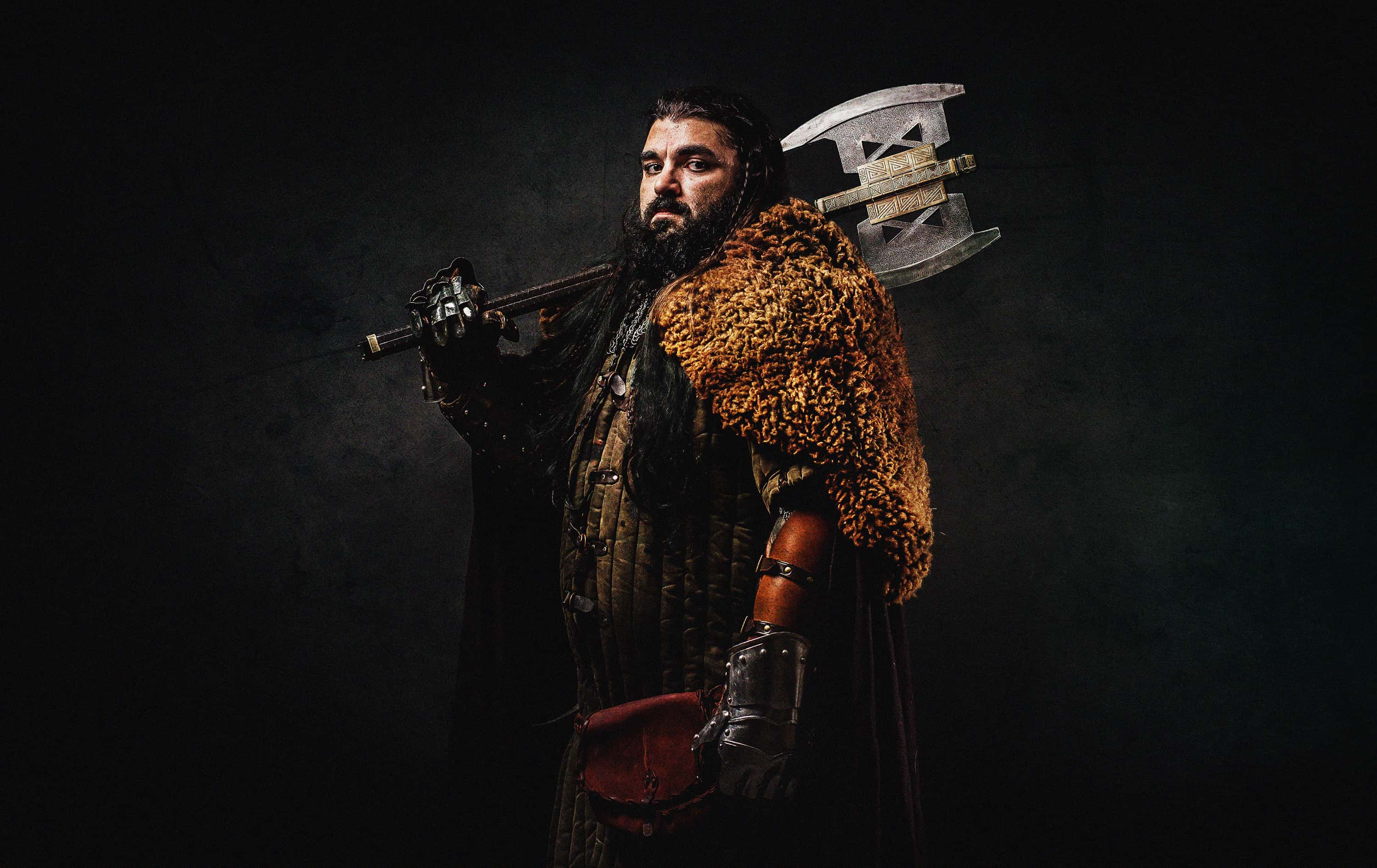 Getty Images
Getty Images
14. To Valhalla
The religion practiced by the Vikings is known as Norse Paganism. In old Norse Mythology, the Aesir are the principal gods of the pantheon including fan-favorites Odin and Thor. The Vikings were fierce warriors, and part of that was baked right into this religion—they believed if they perished in battle, the might be selected to join Odin in the majestic halls of Valhalla to wait and prepare to join Odin for the events of Ragnarok.
15. Clean Freaks
Usually, when we think of Vikings, we think of big unkempt men with long beards. However, Vikings were actually very hygienic people, especially for the time period in which they lived. Tweezers, razors, combs and even ear cleaners made from animal bones and antlers have all been found in Viking excavation sites. Who says you can't look fabulous while raiding and pillaging?
16. Odd Pets
Some Vikings enjoyed keeping pets, including cats, dogs, falcons, peacocks, and even bears. Bear cubs would be trapped and then raised by Viking families. Brown bears were widely kept as pets but polar bears were considered to be for noblemen only. If a bear got loose or injured a person the owner could face stiff fines and penalties. Eventually, this practice was outlawed because the bears became a nuisance. That's one word for it.
17. Women’s Rights
It's no great secret that women got the short end of the stick in many historical cultures, but Viking women actually had a lot more rights than most women in the world at the time. Women in Viking society had the right to divorce their husbands and could own and inherit property, something women in other cultures could only dream of.
18. Slavers
Vikings were very active in the slave trade. They would capture and enslave both women and men while raiding Anglo-Saxon, Celtic and Slavic areas. These “thralls,” as they were called, were then sold across Europe and the Middle East.
19. Not All Killers
While most of us imagine that Vikings made their living raiding and plundering coastal villages, in reality, most of them were farmers. True, some were raiders, but they were just one small part of Norse society. The vast majority of Norse men and women peacefully grew things like barley, rye, or oats and some raised animals.
20. Vikings on Skis
Scandinavians invented simple skis at least 6,000 years ago, and kept using them through the Viking Age. Norsemen saw skiing as an efficient way to get around, using their skis for hunting and traveling. I wonder if it was all business, or if Vikings could appreciate shredding some epic pow now and again?
21. Viking? What’s a Viking?
Most of the people who we call "Vikings" wouldn't have called themselves that. The term Viking is derived from the Norse word vikingar, which means "raider" or "pirate" and only refers to those Scandinavians who took part in pillaging voyages during the 8th-11th centuries.
22. Blondes Have More Fun
When people think of Scandinavians today, they mostly think of blonde hair. However, while blonde is common in the region, there are plenty of brunettes and redheads as well. Perhaps part of the reason we so associate blonde hair with the Vikings is that many men with dark hair would use a strong soap to bleach it to a lighter shade, sometimes lightening their beards as well. This was partly a fashion statement—even the Vikings weren't immune to vanity—but it also helped to combat lice.
23. The Original Explorers
Around 500 years before the Christopher Columbus set sail for the West, Vikings had already discovered the new world. Leif Erikson, the Viking who led the expedition, landed in what is now the Canadian province of Newfoundland and Labrador around the year 1000 AD. He named it Vinland, and while we don't know the full extent of their colonization, we do see evidence of Viking habitation at placed like L'Anse Aux Meadows.
24. Knarrly
The Vikings were a seagoing people, and that wasn't by accident. Since much of Scandinavia consists of inland mountain ranges, and since there is easy access to the sea in most areas, the Vikings did most of their travel and trade by boat. Ships became an important part of their culture, often taking on religious and symbolic purposes.
They had many different kinds of ship, and while most were made for use on rivers or near the coast, they also had ships called knarr which were built to withstand the open ocean and were used for settling Iceland, Greenland and North America.
25. Long Reign
The Vikings were most prominent in Europe during the period between 793 and 1066 AD. During this time, they traveled throughout the continent, invading lands that stretched from Ireland to Russia to Turkey. This time was called the Viking Age, and it saw the spread of Norse culture, especially in the British Isles.
26. Green Roof
Viking homes had sod roofs. Gently sloping roofs were covered in layers of birch bark and then covered in sod. This would help keep the heat in and apply pressure to the log walls which helped make them keep out the wind. Plus, it looks so pretty!
27. End of an Age
No one is sure what ended the Viking culture, but it is believed that they were eventually converted to Christianity which eventually led to the end of the Viking way of life.
28. Founding Fathers
Vikings are credited with founding a number of European Cities. The Irish cities of Dublin, Wexford, Waterford, Cork, and Limerick were all prominent Viking settlements. Numerous cities across England, specifically York, were also hugely impacted by the Vikings.
29. Not Exactly Scholars
The reason we know so little about the specifics of what the Vikings did is that they mostly didn’t bother to write it down. While they did leave some fragmented writing, mostly in the form of runestones, most of what we know about Viking culture comes from things written by their enemies. Serious research on the Vikings did not begin until the 20th century.
30. Dietary Restrictions
The diet of a Viking heavily depended on where they lived and their social standing. Vikings of a higher position in society regularly ate meat and seafood, where lower standing individuals were more likely to eat more vegetables, essentially living off their farms.
31. Social Structure
Nordic societies had four major social classes: Kings, Jarls, Karls, and Thralls. The King was the land owner and ruler. A Jarl was considered the highest noblemen of the king. They were given territories to rule over by their king. Karls made up most of the population, these were the free people farmers, tradesmen, and builders who could also own land if they were able. Finally, there were the Thralls, or the slave class.
32. To Russia with Love
The Vikings had a large influence on the organization of Eastern Russia. Swedish Vikings known as the Rus' traveled into Eastern Russia, which at the time was ruled by many warring Slavic tribes. A Rus' chieftain named Rurik started conquering and unifying the tribes, setting up a kingdom in Novgorod in the 9th century. His Rurik Dynasty would go on to rule the Grand Duchy of Moscow and found the Tsardom of Russia.
33. Scourge of God
Viking raids on Christian settlements were so brutal that many of the monks and priests who lived in them thought that the Vikings were sent from God to punish them for their sins.
34. Bad Parenting Skills
Having Viking parents could be a real hazard to your health. Vikings would often cast their own children out if they were deemed them too weak or sickly.
35. No Horns About It
Despite what you’ve seen in the movies, Vikings did not actually wear horned helmets. The image of the horned-helmet Viking is from an 1876 production of Der Ring des Nibelungen, a German musical drama. Archaeologists have found one Viking helmet with horns, but it was ceremonial and was never used in battle. By all accounts, when Vikings charged into battle, they did so with nary a horn to be seen.
36. Wordsmiths
Some of the words we use today come from the Vikings. Words such as: anger, ugly, weak, skull, and slaughter are all descended from Norse language. More unexpectedly, we can also thank the Vikings for the words cake, freckles, husband and wife.
37. Board Games
Vikings were fond of board games. A favorite was Hnefatafl—a strategy game like chess played on a checkered board using figurines representing two rival armies.
38. Courts
Vikings had their own system of law and order. Men were obliged to attend meetings where all judicial issues were resolved by the community leaders. These were major events in the Viking society and could go on for days.
39. Fire to Go
Vikings often spent long voyages in unfamiliar territory, so they needed an effective way to create fires consistently, and their solution was rather... interesting. They would collect a special fungus from trees, cut it into slices and beat the slices so they had a felt-like texture—makes sense so far. Then, the slices were boiled in urine. OK, you lost me.
The sodium nitrate in the urine would make the material, which they called hnjóskr or fnjóskr, smolder for days rather than burn immediately, so the Vikings could take their fire with them on the go.
40. Can I Axe You a Question?
Huscarls, sometimes written as housecarls, were elite bodyguards tasked with defending Scandinavian kings. The huscarls for at least one such king, Cnut the Great, king of Denmark, England and Norway, wielded enormous axes called Dane axes which could easily split helmets and shields in two.
41. Vikings Run Berserk
Ever feel like you just need to go berserk? Well, you can thank the Vikings for that! Berserkers were particularly scary Viking warriors who would go into battle in a trance-like state of fury. They were particularly noted in Icelandic histories and were said to wear bear or wolf skins into battle instead of armor.
42. What a Way to Make an Entrance
The event that solidified the Vikings' status as villains in English culture took place in June of 793 AD, when raiders arrived on the island of Lindisfarne off of England's northeast coast and brutally destroyed the abbey situated there. One English scholar from the time period named Alcuin of York wrote "Never before has such an atrocity been seen," and the Vikings were just getting started.


